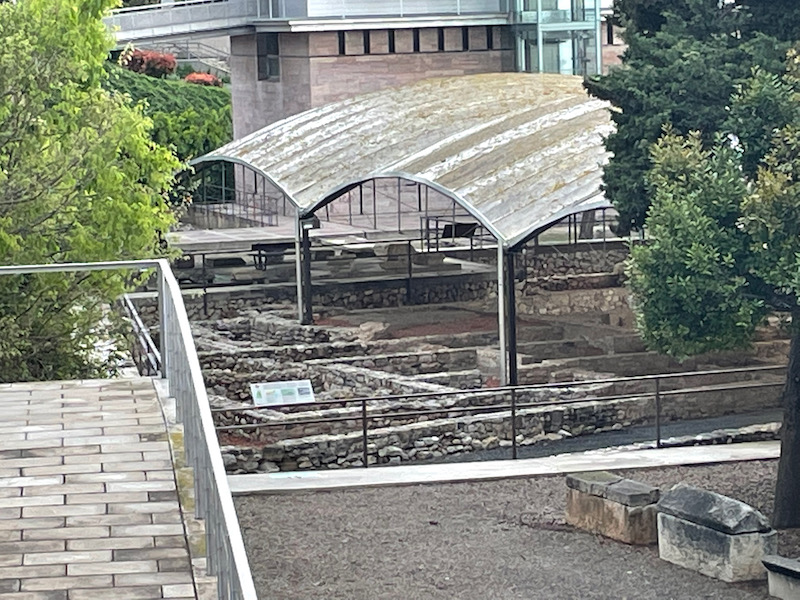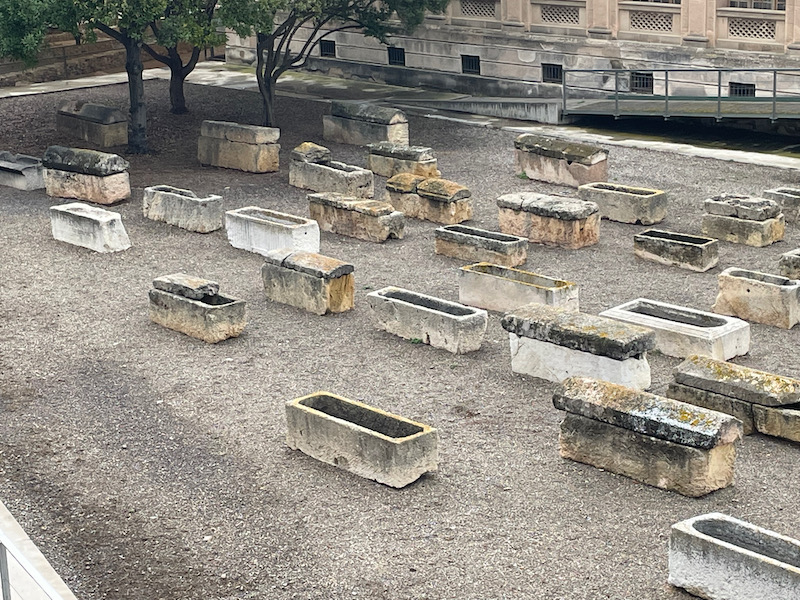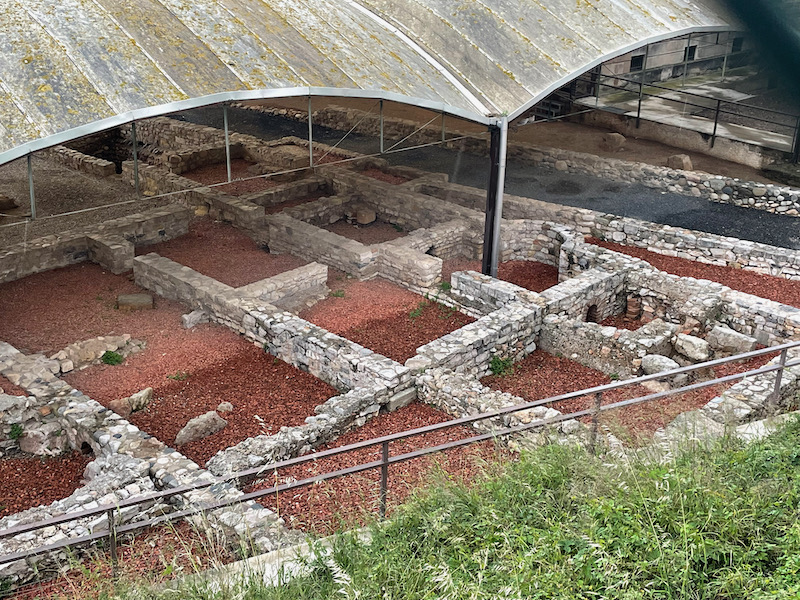Our Blog - Tarragona, Spain
Tarragona is a coastal city on the Mediterranean, founded before the 5th century BC. There was a large Roman presence here, and there are a few vestiges that remain, including an Amphitheater, some of the roman walls, a necropolis, and the Roman Circus. Then you have a set of medieval buildings in the "Part Alta" or "upper part", which is aptly named because it is up on the top of a hill that overlooks the sea (and which is a decent hike up if you start at the beach!). We took time to walk around this part of town and visit the Cathedral, which was quite impressive.
We stayed in the El Serrallo neighborhood, which is the old fishing port. As we walked up to the beach after we arrived, we say a set of HUGE yachts. This one is called the Crescent and is believed to be among the world's largest and most expensive "megayachts". It is 444 feet long and supposedly has a helipad and a retractable helicopter hanger. According to news articles, it has been seized by authorities here after requesting permission to leave in March. While the owner is "not a matter of public record", it is thought to be owned by an executive in a Russian oil company. It makes the two super-yachts docked next to it seem a little small!
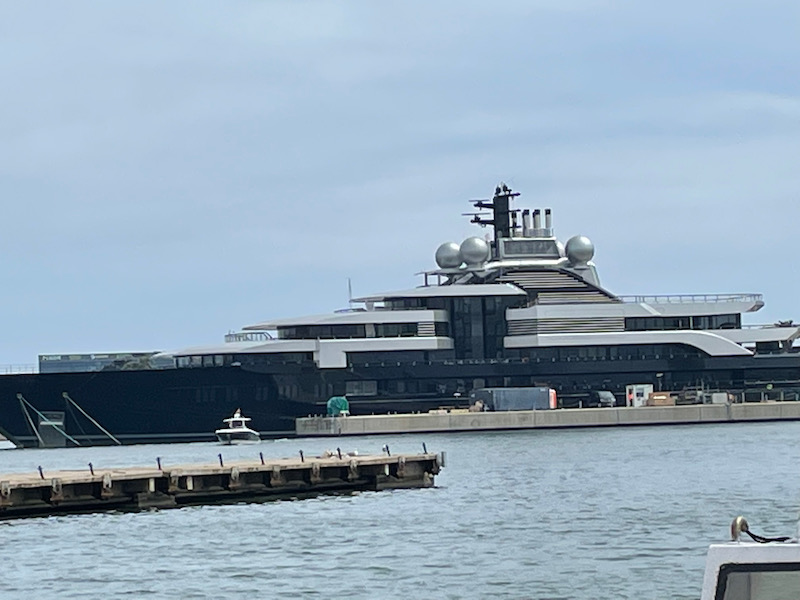
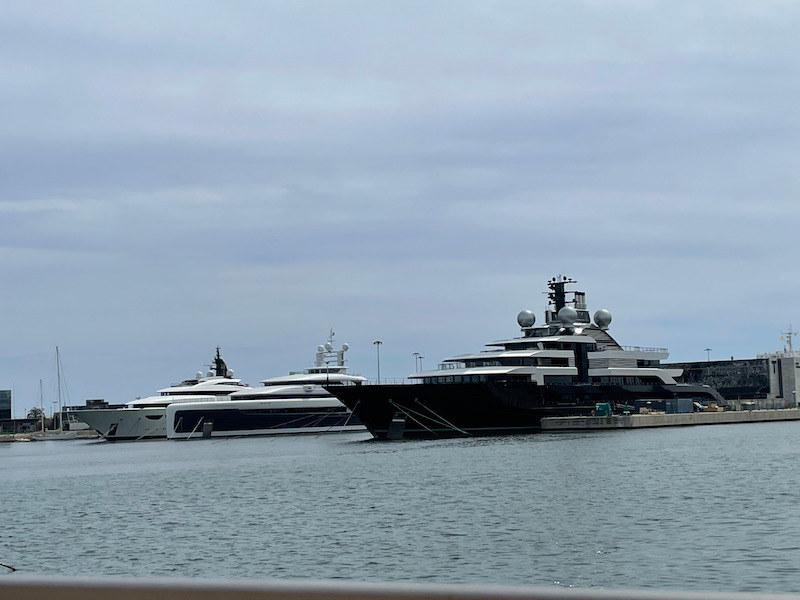
Next we have the Tatoosh, which is owned by the estate of Paul Allen (one of the Microsoft founders) and the Solandge, which I found a website where you could charter it for 1 million euros per week.
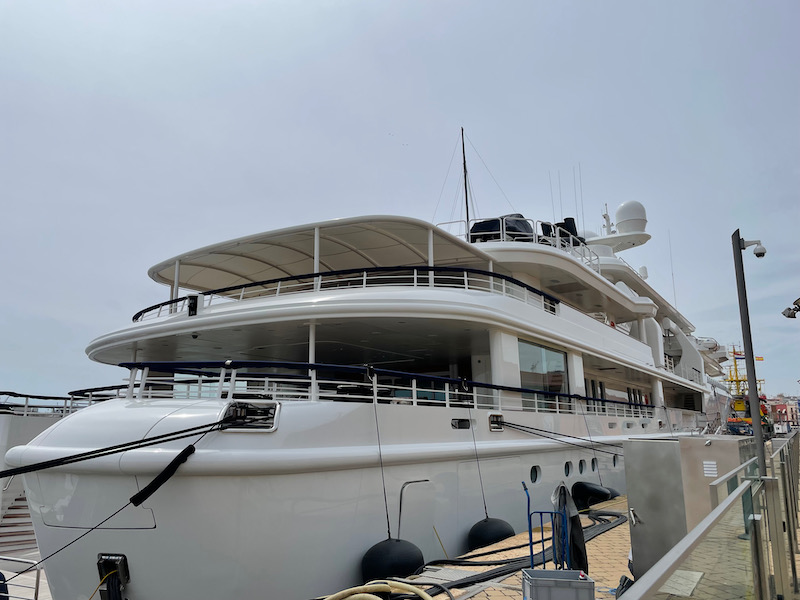
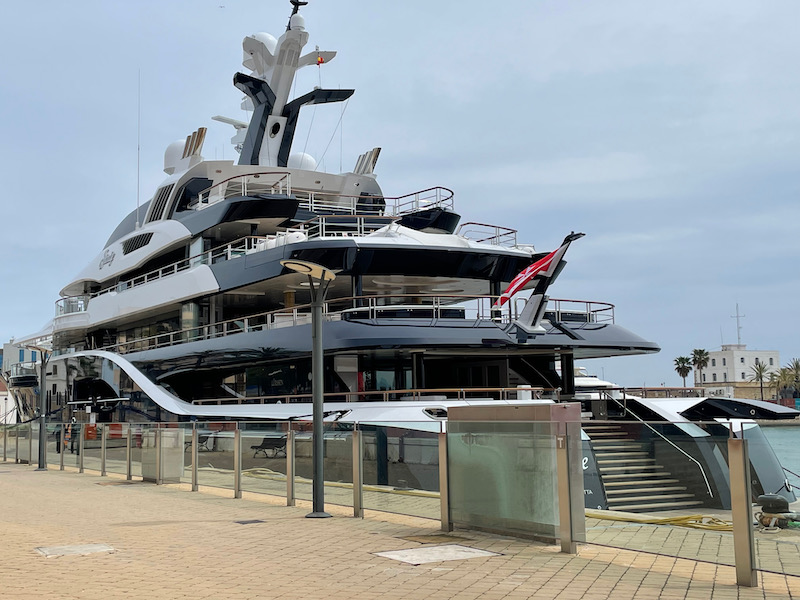
Like many Roman cites, there is a Roman Amphitheater here (or what is left of it). This one was built at the end of 1st century AD and the start of 2nd century AD. It is outside of the city walls, down near the Mediterranean. It would have been able to hold 14,000 people for fights between gladiators and against wild beasts, as well as public executions. In 259, during the persecution of Christians by Emperor Valerian, the city's bishop and his deacons were burned alive here. After Christianity became the official religion of the empire, the amphitheater was no longer used. The following years, some of the stones were used to build a basilica to commemorate the three martyrs. We only walked around the outside and didn't go in to roam around. I think the last picture was my best!
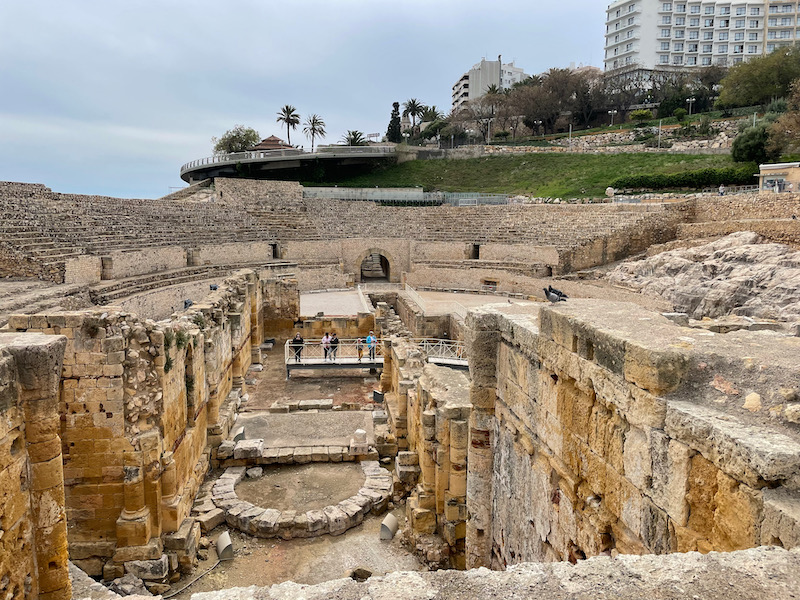
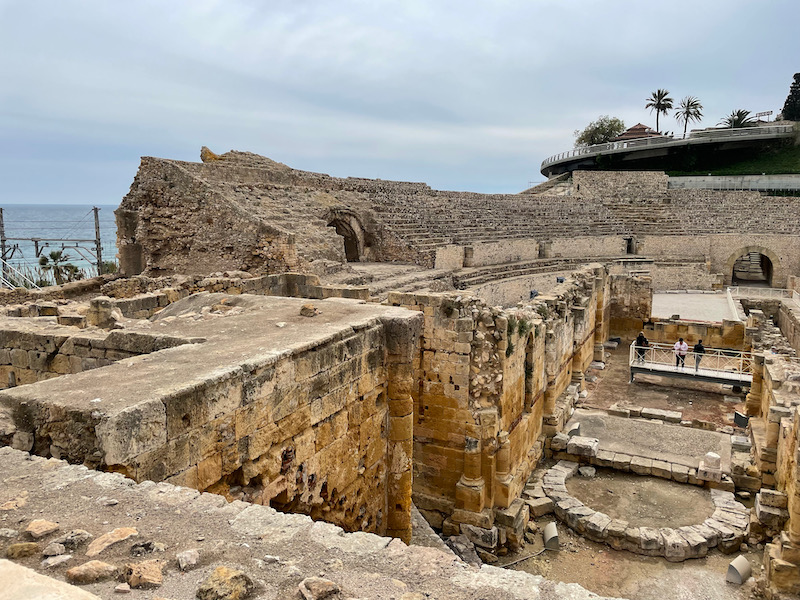
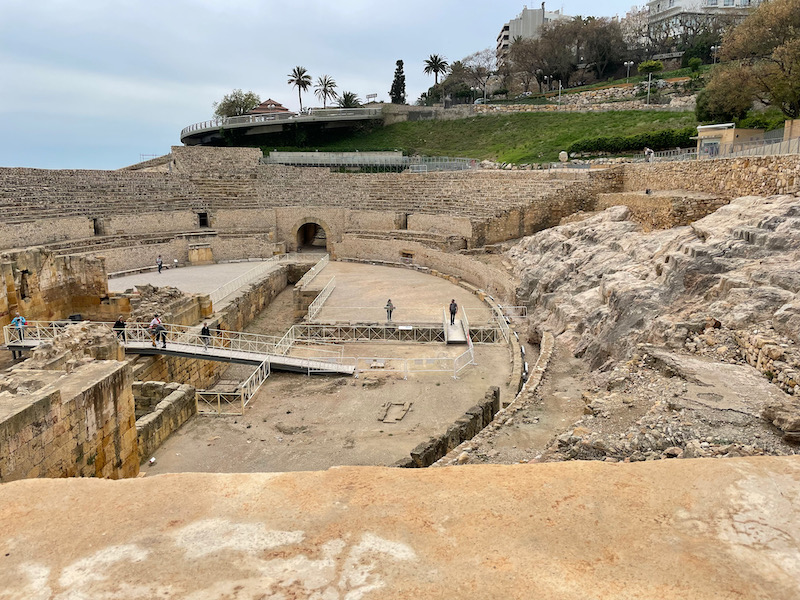
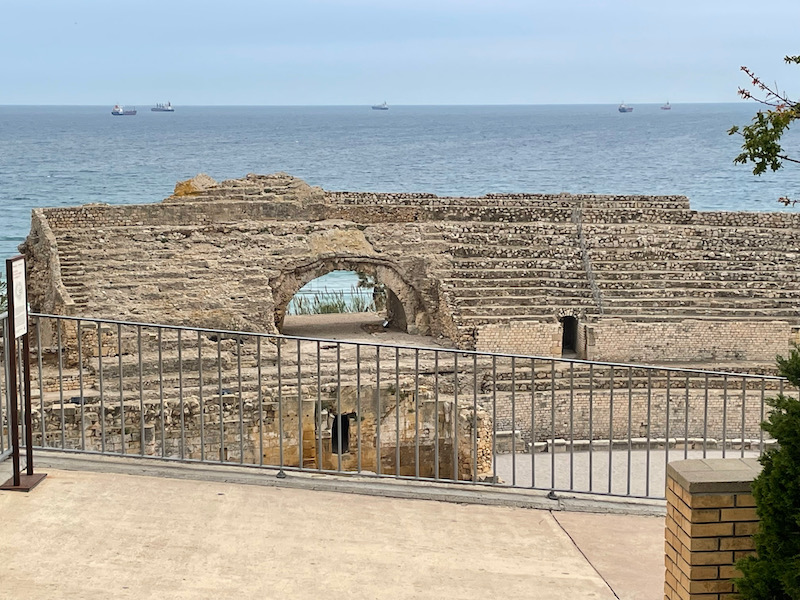
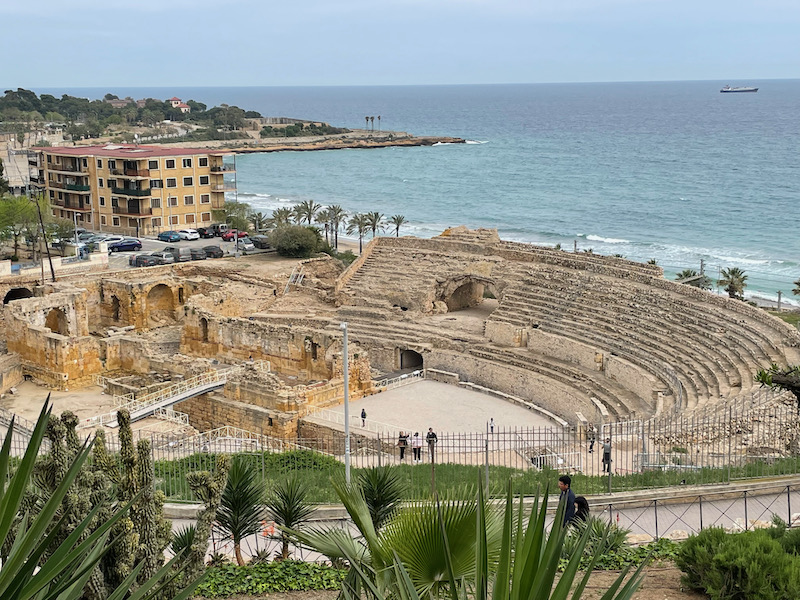
There is a section of the 12th-century Old Wall that has been preserved. In the 14th century, the walled area was enlarged to include the area of the old Roman circus, and a couple of towers (like this one) remain today.
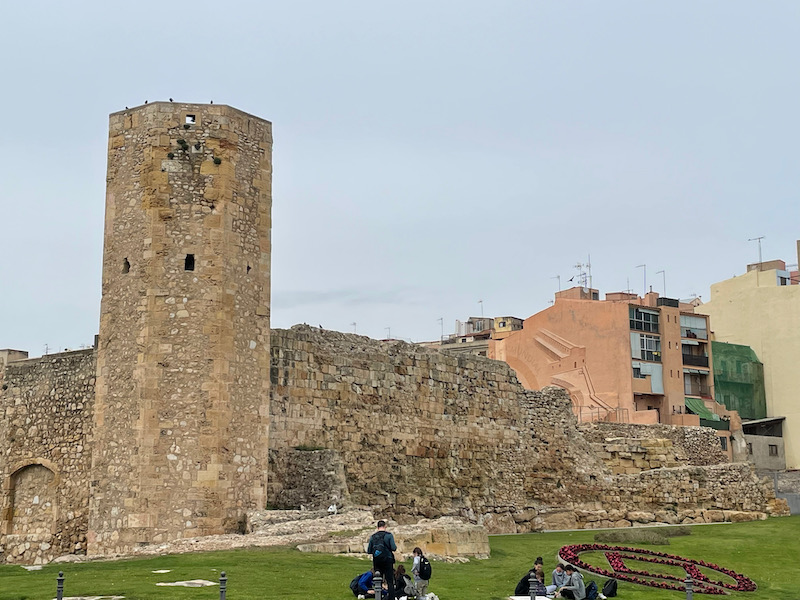
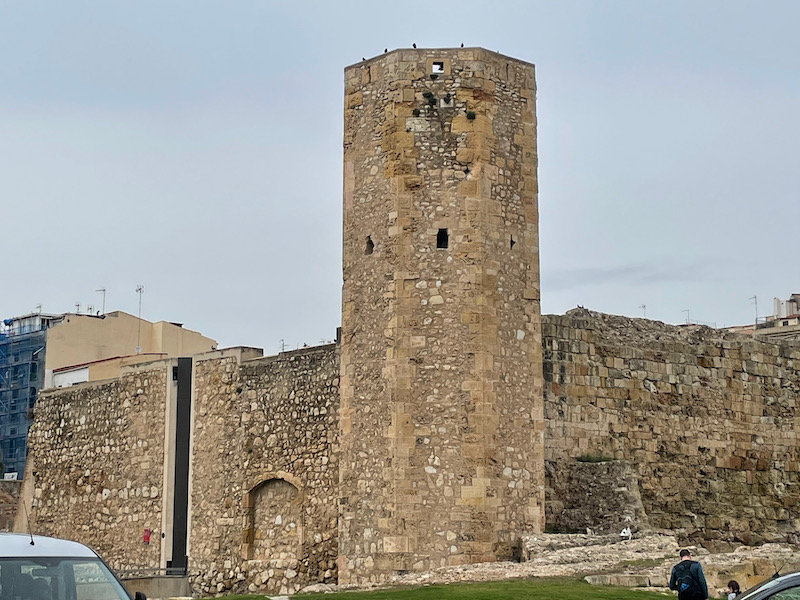
The Rambla Nova is one of the most popular streets in the city center. It was built in 1854 to connect the upper and lower parts of the city. It starts at the Balcony of the Mediterranean, a nice walkway with views of the water. At that end of the Rambla Nova is a monument of the Catalan Admiral Ruggiero di Lauria. It has lots of really interesting buildings on it!
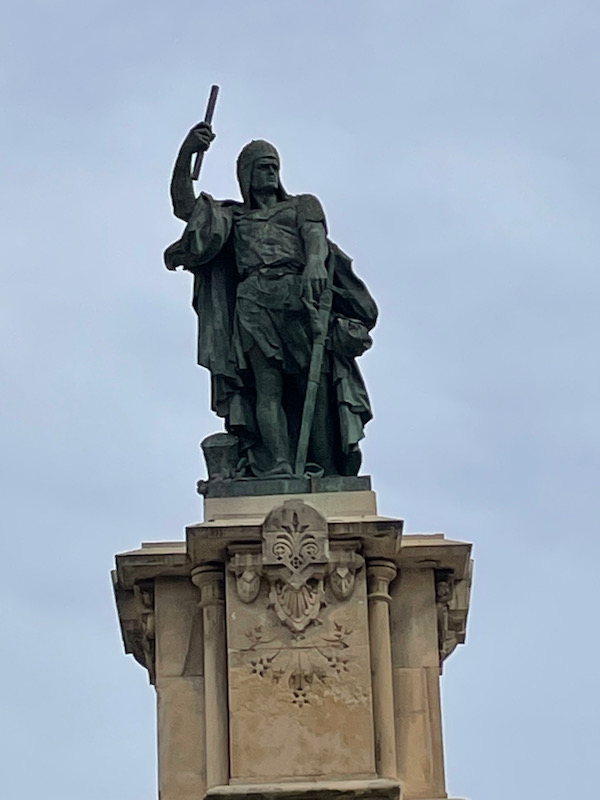
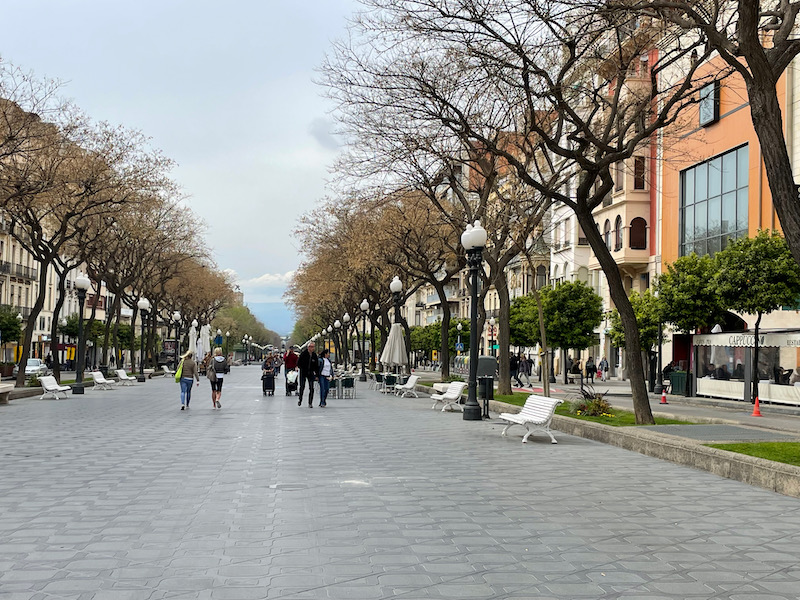
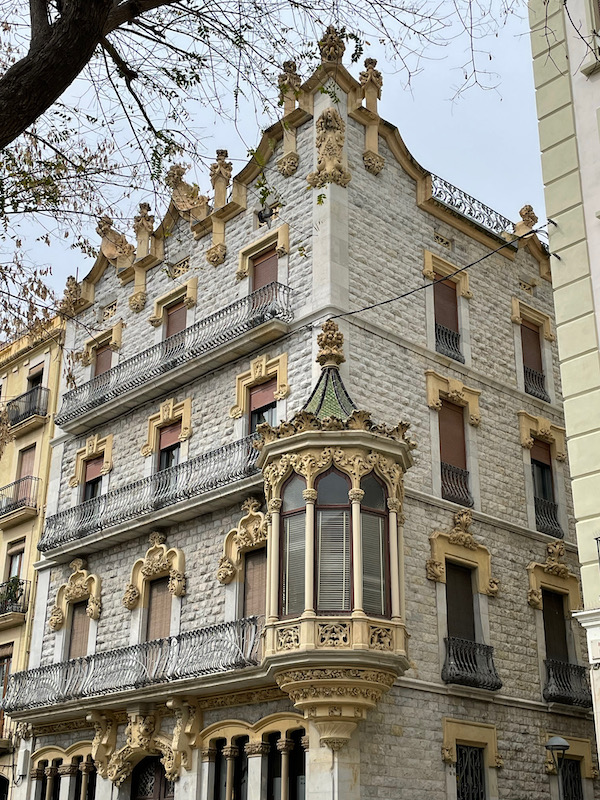
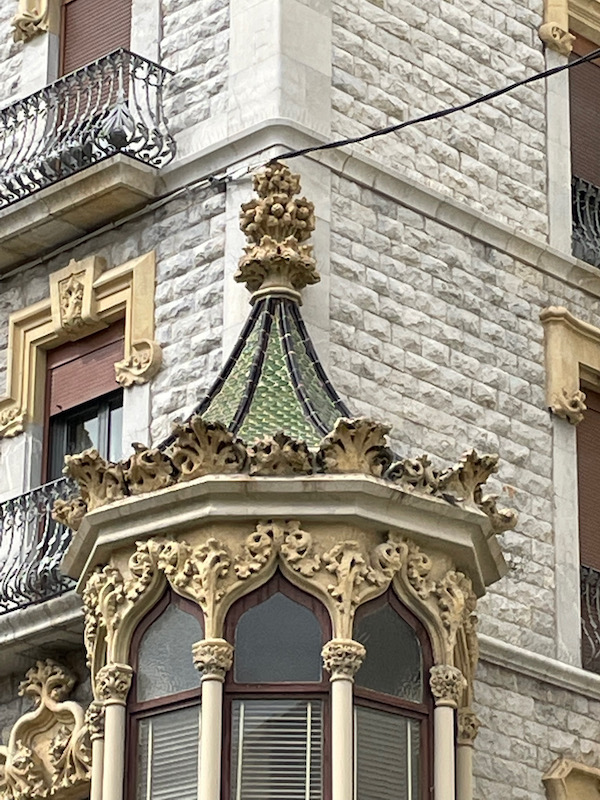

Monument to the heroes of 1811 is a sculpture dedicated to the people of Tarragona who faced the Napoleonic army in 1811. The central figure is the symbol of the city of Tarragona. She has a firm and impassive stance with her gaze fixed on the horizon. She holds in her arms the lifeless body of the dead hero, representing those who defended the city. At the bottom, wounded, is another hero with a very expressive face, holding a dagger. A bit of trivia: the artist used a mould of his own hands and left his own fingerprint to give the monument more realism.
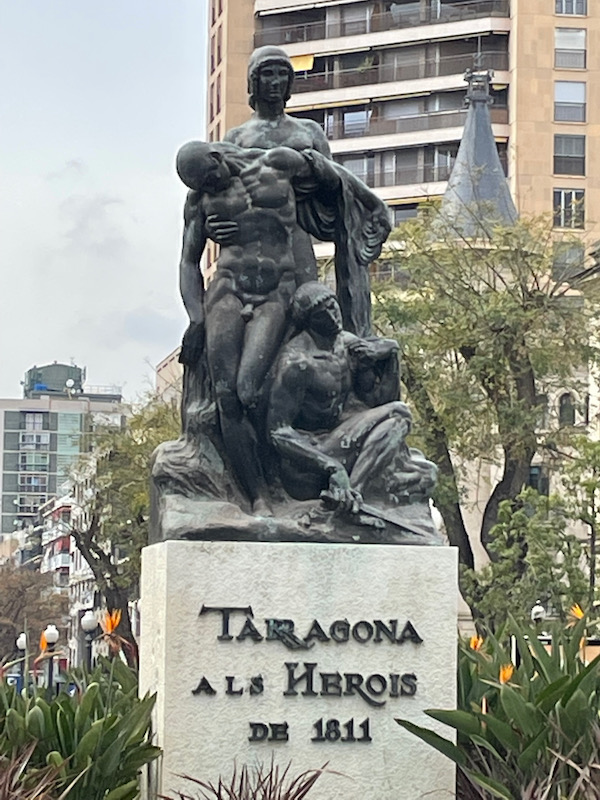
Mercat De Tarragona, or the Central Market building. It was built in 1915 with the exterior done completely in stone. The two main facades have 3 semicircular arches that correspond to the 3 "naves" on the interior.
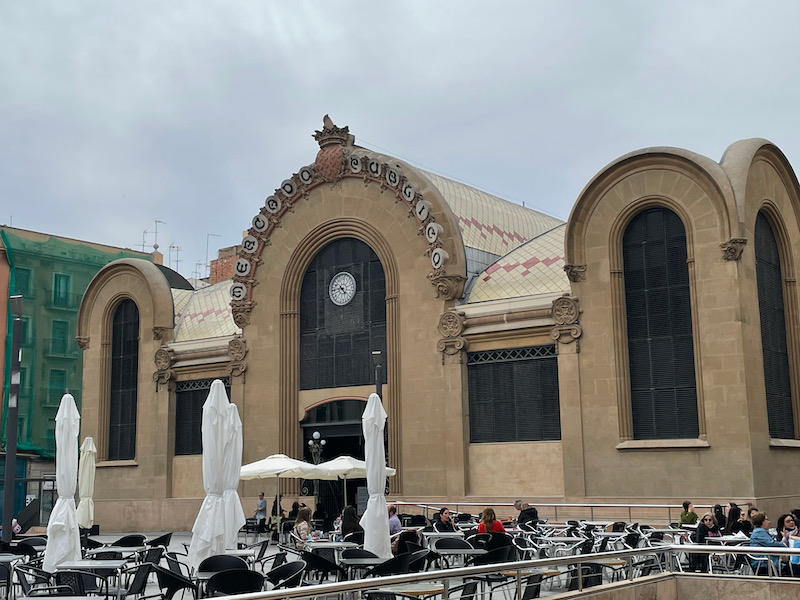
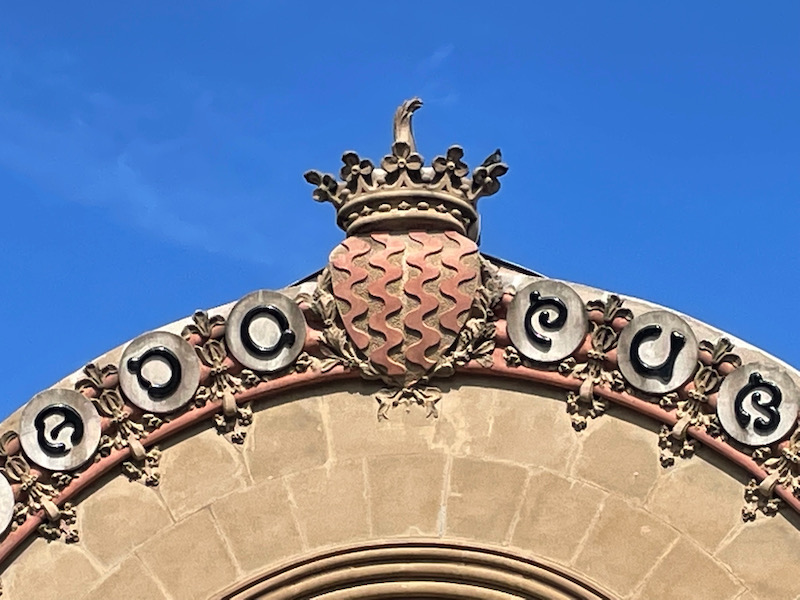
The "Font del Centenari", or Centennial Fountain, is a relatively recent addition to the Rambla Nova, inaugurated in 1954. It is made of stone and consists of four independent sculptural elements formed by the figure of a man and an animal with water gushing from its mouth, each representing a different region of the Earth. This first one is Sub-Saharan man and the hippopotamus. The second is the American Man and the crocodile, showing what may be a native American (based on the clothing). The 3rd picture shows the European man, with a shield and sword at his feet and two wild animals (can't tell exactly what they are). The last picture is the man of the Orient and an elephant. He has his mouth covered by his hand and some of the cloth of his turban.
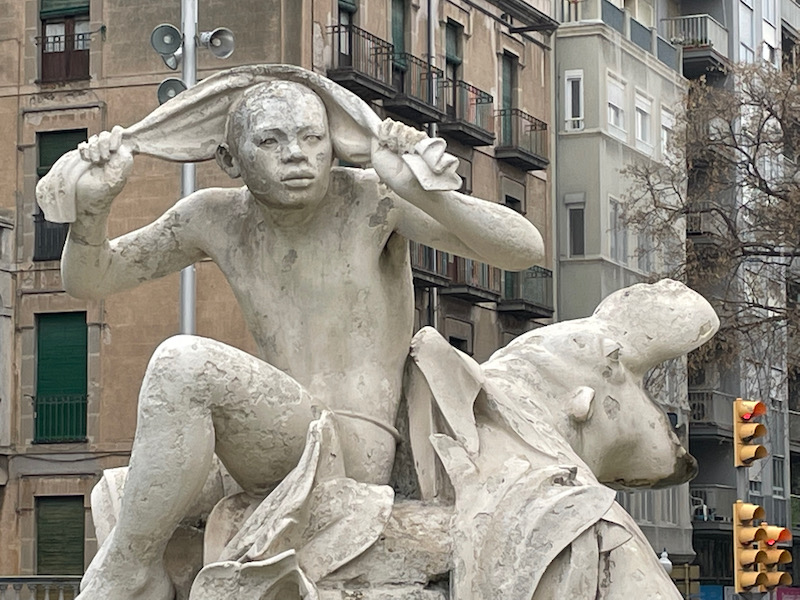
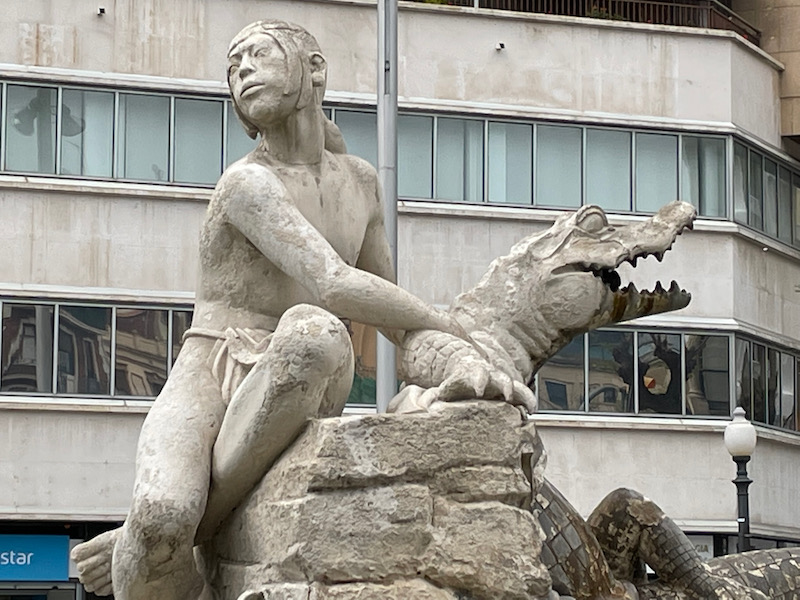
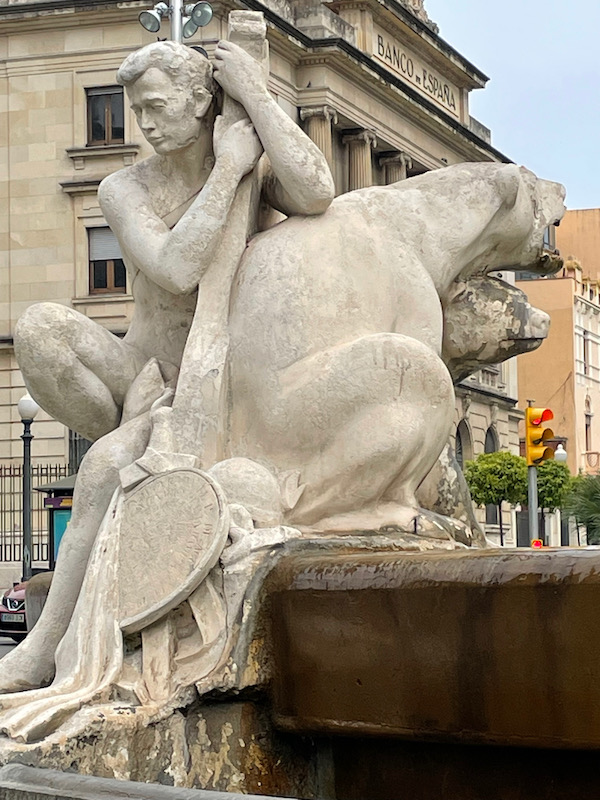
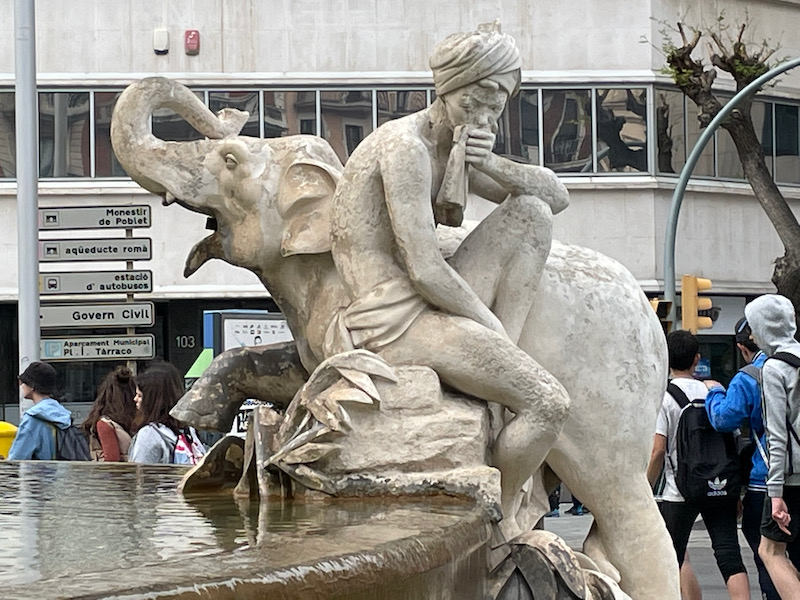
The Monument to the Castellers is a sculpture from 1999 that represents an 18th-century Catalan tradition performed during a festival every year, the human tower. The scene consists of 222 people performed in great detail. There are faces of several famous people: Picasso, Gaudí, and Joan Miró.
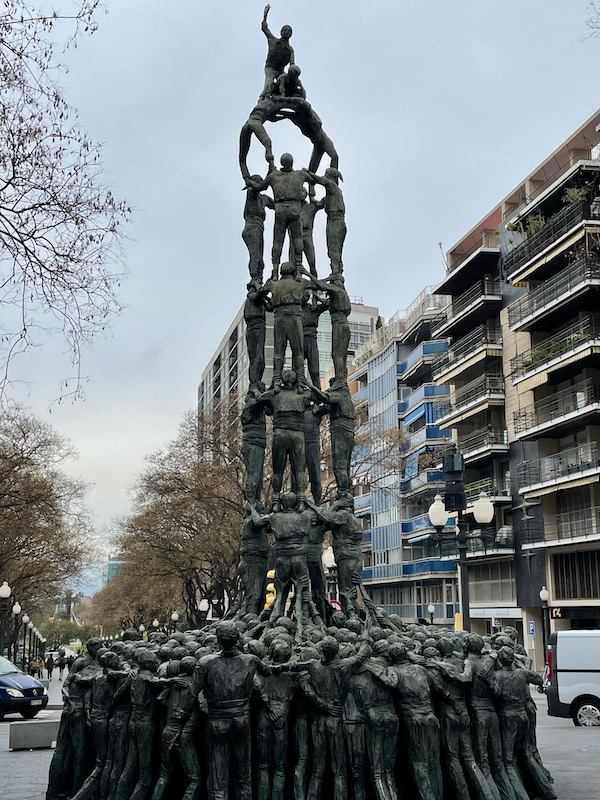
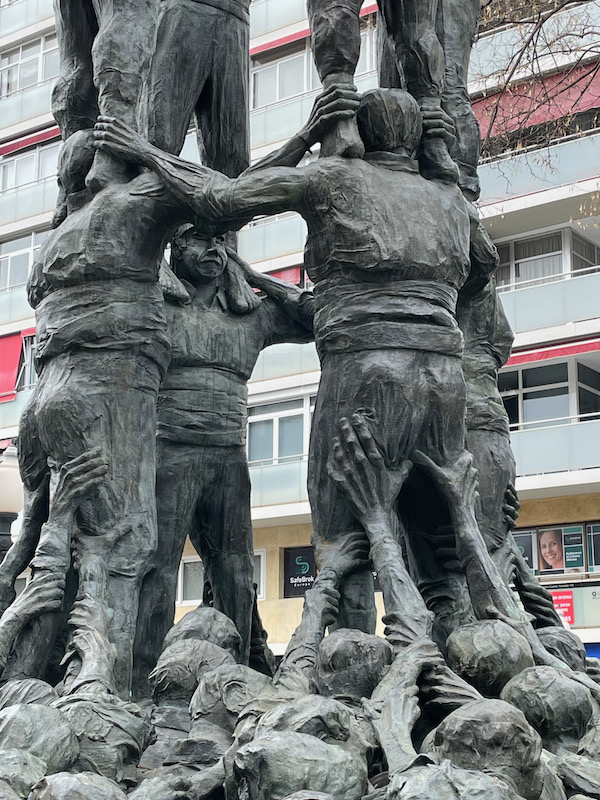
Originally the Tarragona Bullring, this is now called Tarraco Arena and is used for various events. It was built in 1883 with an initial capacity of 17,000 spectators. In between the red brick pillars is local white stone.
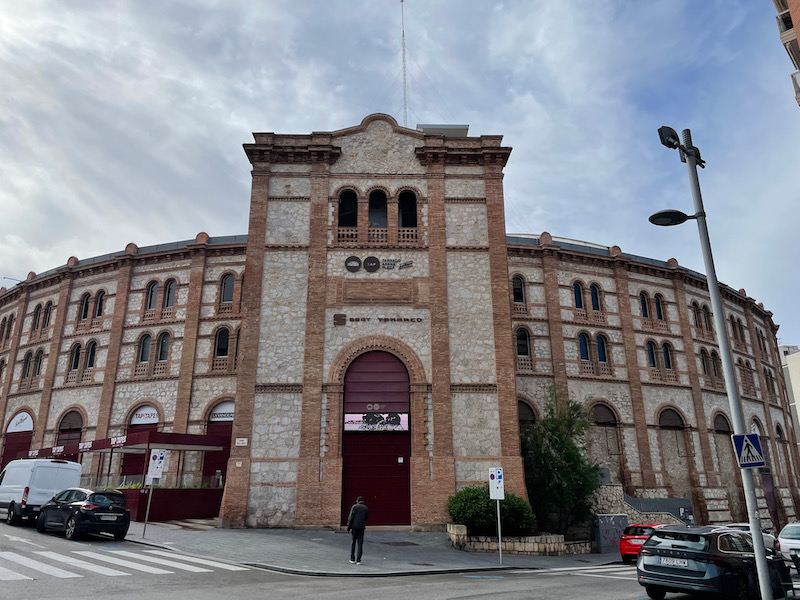
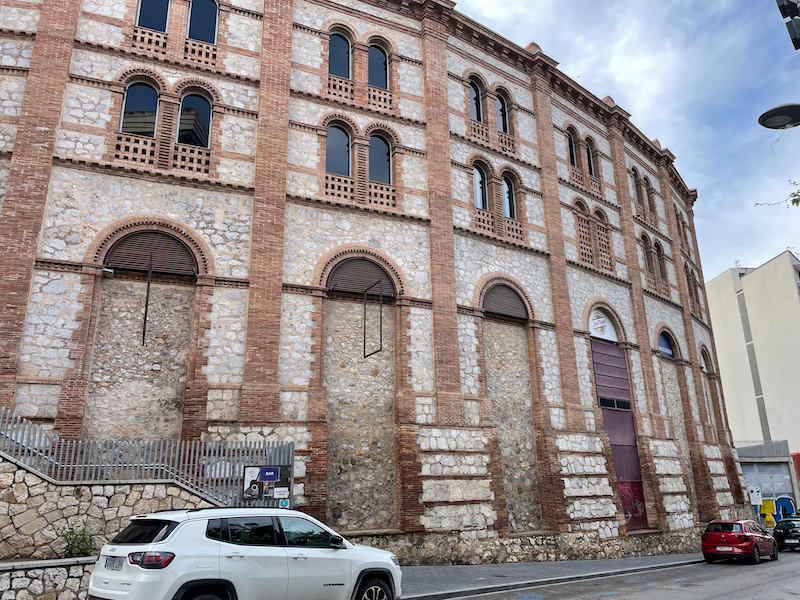
One of the older things in the city are the ruins of a large square dating from Roman times. This would have been the local Roman forum, including columns, a basilica, and part of the court of justice. Tarragona's forum was built in approximately 30 BC.

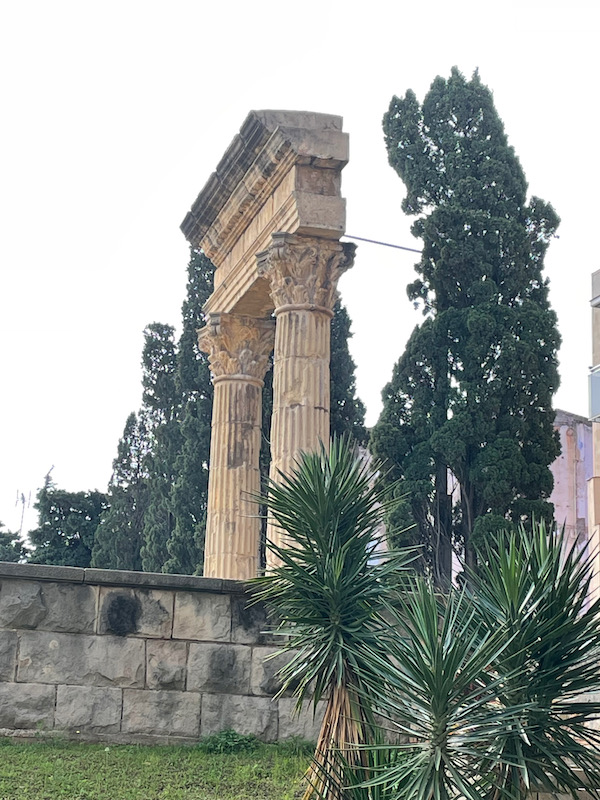
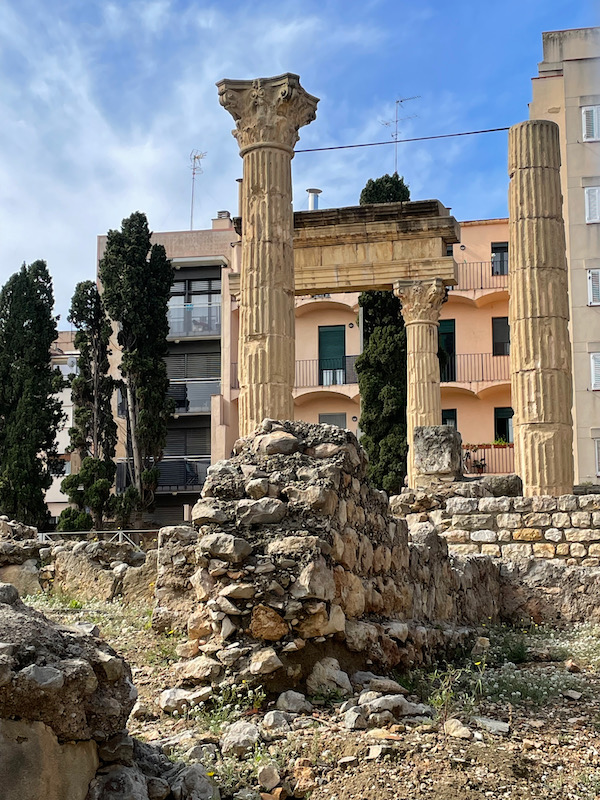
We are now back at the old part of the city of Tarragona, with the old Roman Walls. These walls were built in the 2nd century AD and modified in the Middle Ages, and again in the 18th century.
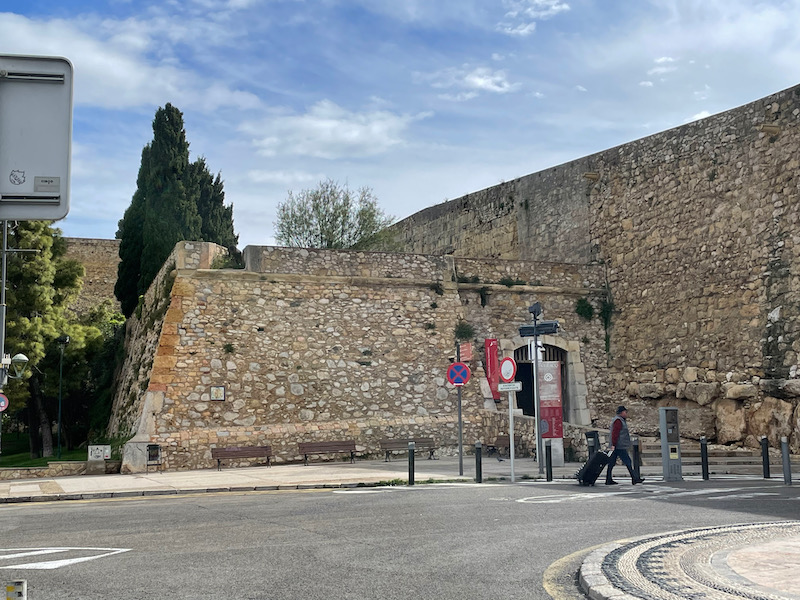
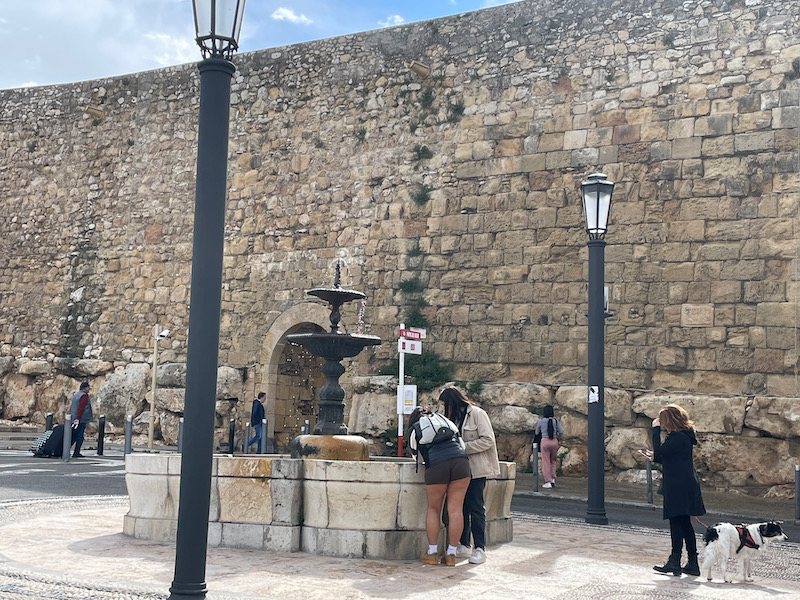
Inside the walls, in the old quarter, is the Casa Castellarnau. It was built in the 15th century and has been the home to some of Tarragona's most influential families. The inside is a mix of styles from various eras, including arches from the 15th century, Gothic columns, and the painted ceiling of the ballroom.
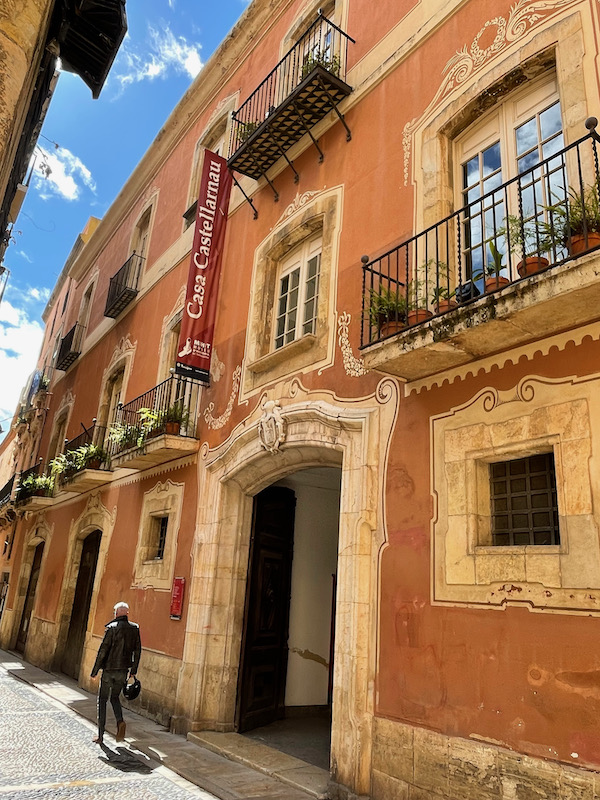
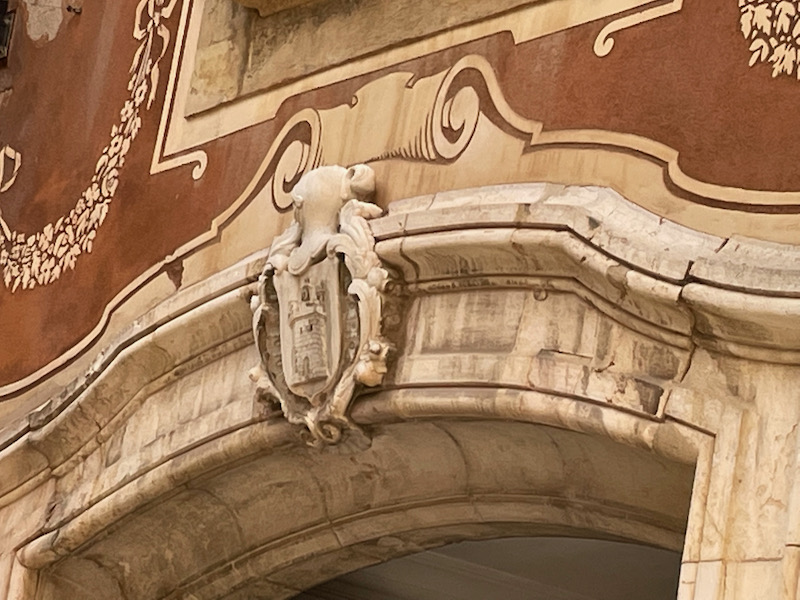
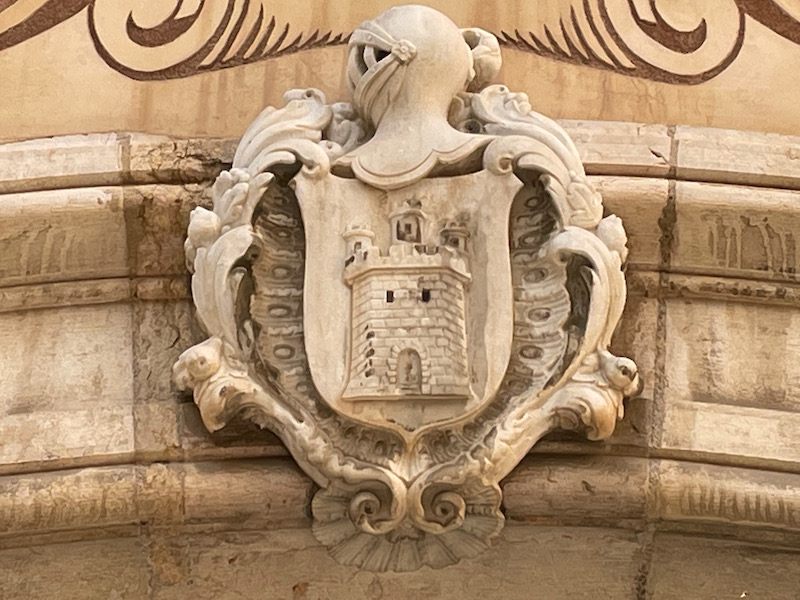
We weren't sure exactly what this was, as we weren't expecting to see it. But after-the-fact, it looks like maybe this was a little parade as part of the Tarraco Viva celebration, which is a yearly celebration dedicated to spreading the history of Roman times.
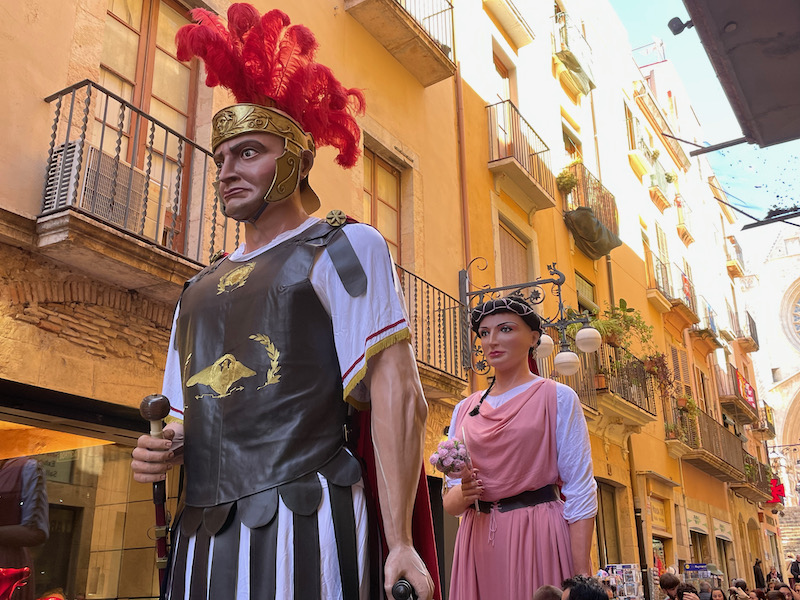
The Tarragona Cathedral is on the site of a Roman imperial worship site, built during the 1st century AD. According to archaeologists, there was a large square and a temple of Emperor Augustus. The Cathedral was consecrated in 1331. The façade has 3 doors but the central door is the impressive one. It is a Gothic portal with statues of apostles and prophets on either side. The last picture is the tympanum of the portal on the left, which is decorated with the scene of the Adoration of the Kings in the Portal of Bethlehem.

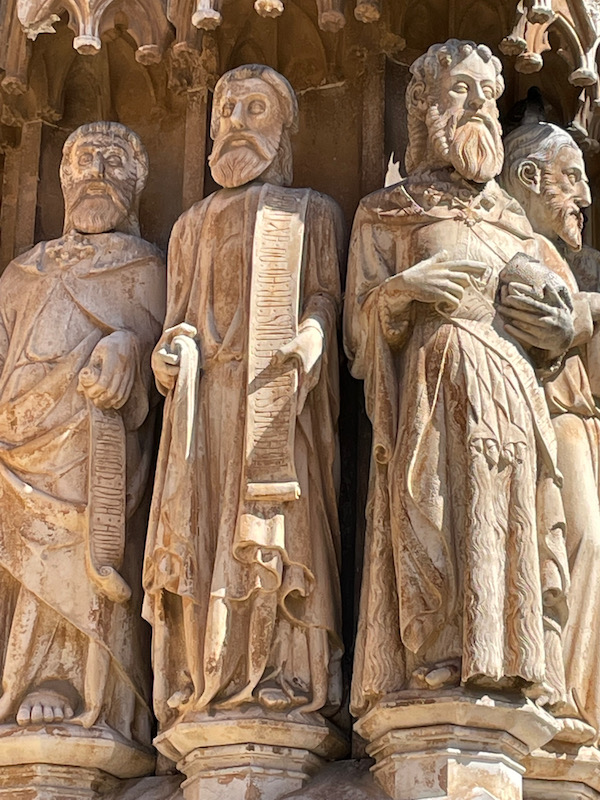
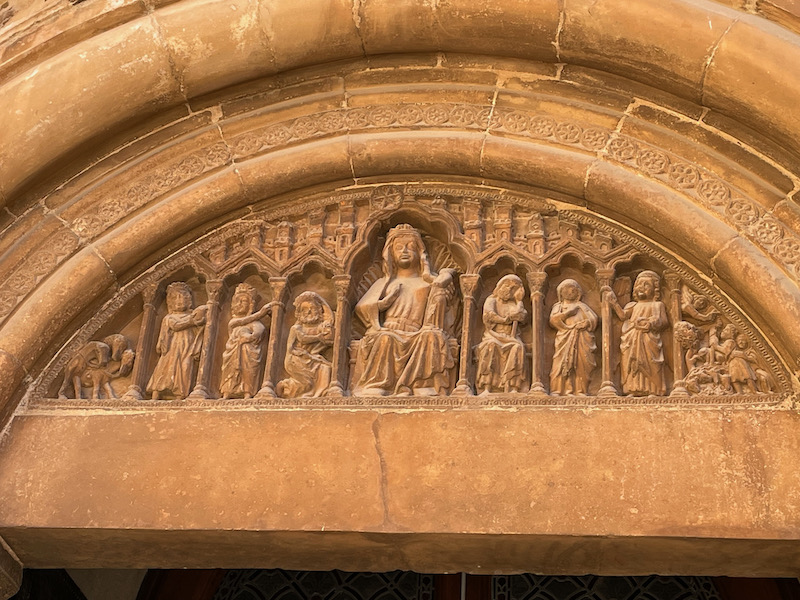
It has a Latin cross plan with three naves and a transept. Then the inside view of the triangular-shaped stained glass above the main entry door.
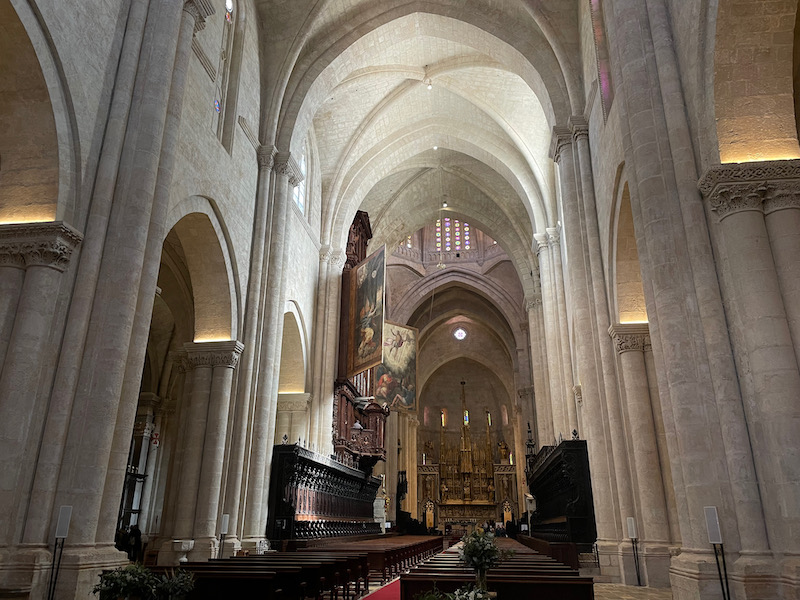
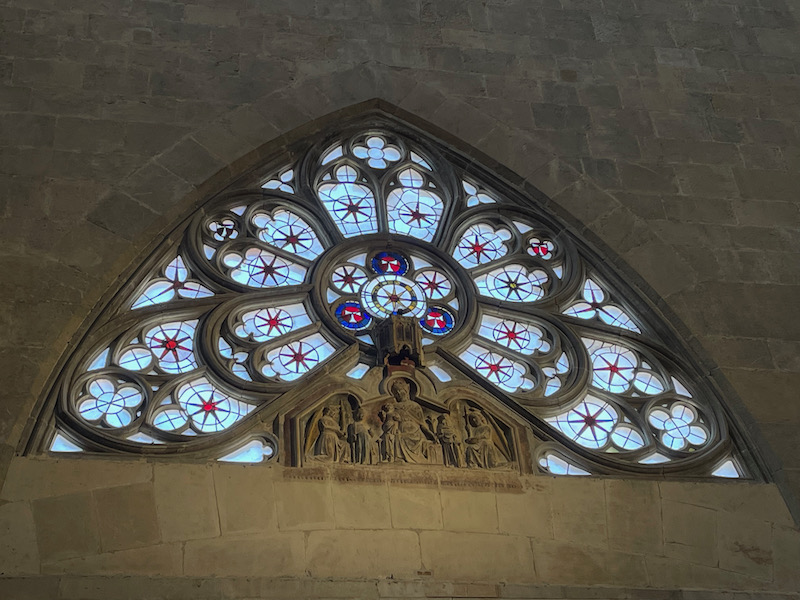
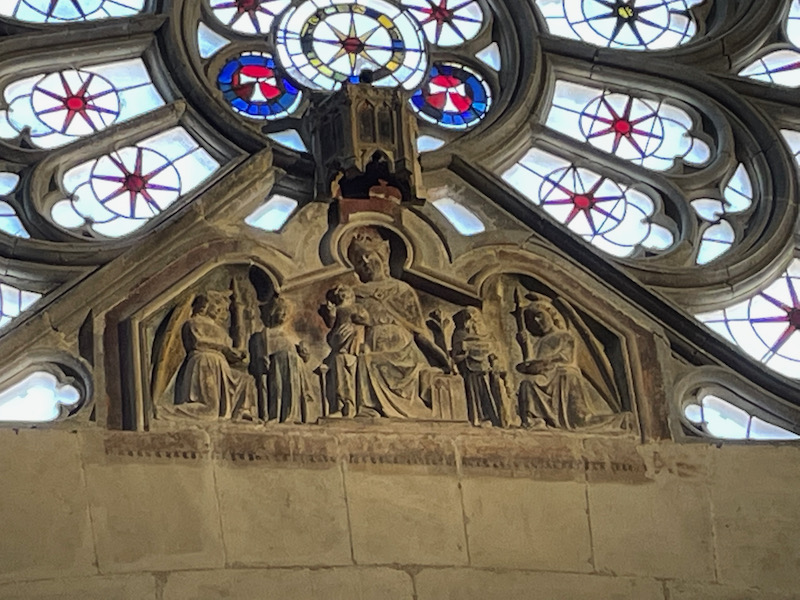
The Chapel fo Saint Michael was started around 1365 and completed in 1379. It has a really nice altarpiece depicting St. Michael, created by Bernat Martorell in the 15th century. In the main part, you can see Saint Michael fighting a dragon, which comes from the book of Revelation (12:7).
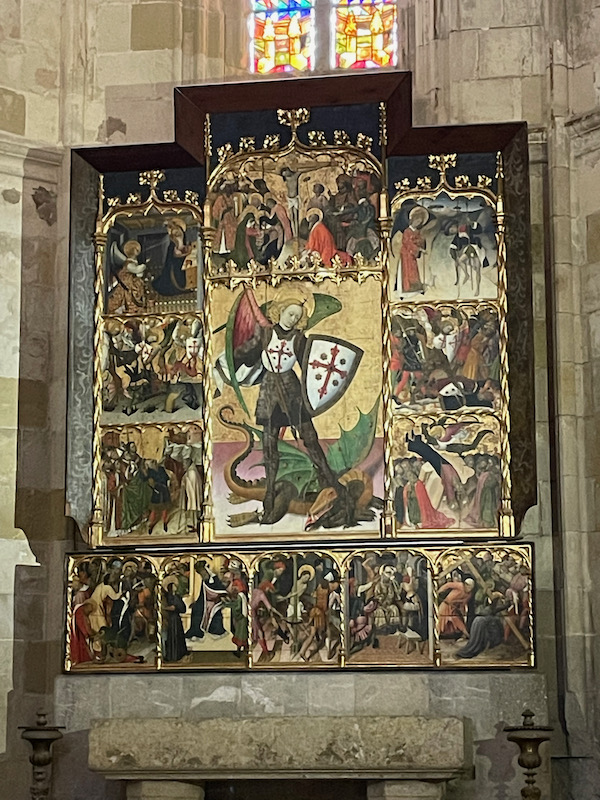
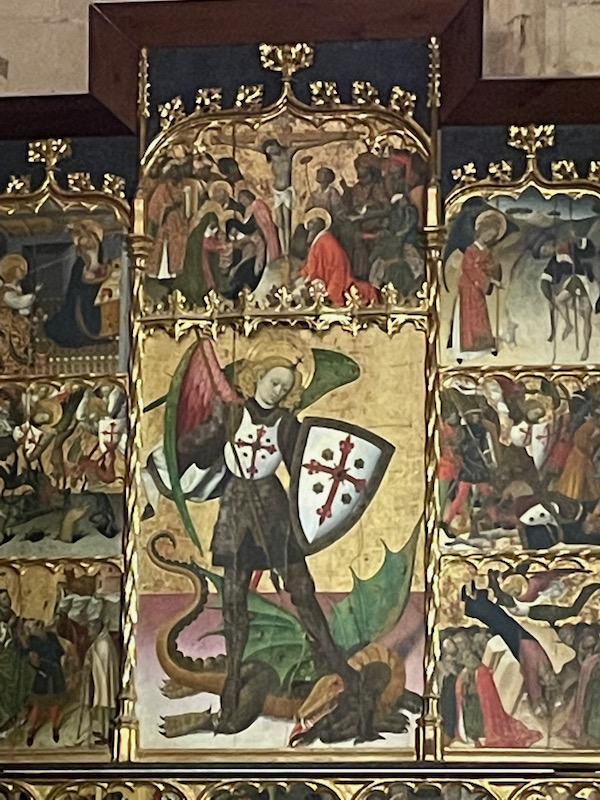
The Chapel of Saint Thecla was designed structurally as a temple with a cruciform central plan and a large dome. It honors Saint Thecla of Iconium, the patron saint of Tarragona. The decor is mostly classic baroque using pink jasper from Tortosa and white marble from Carrara.
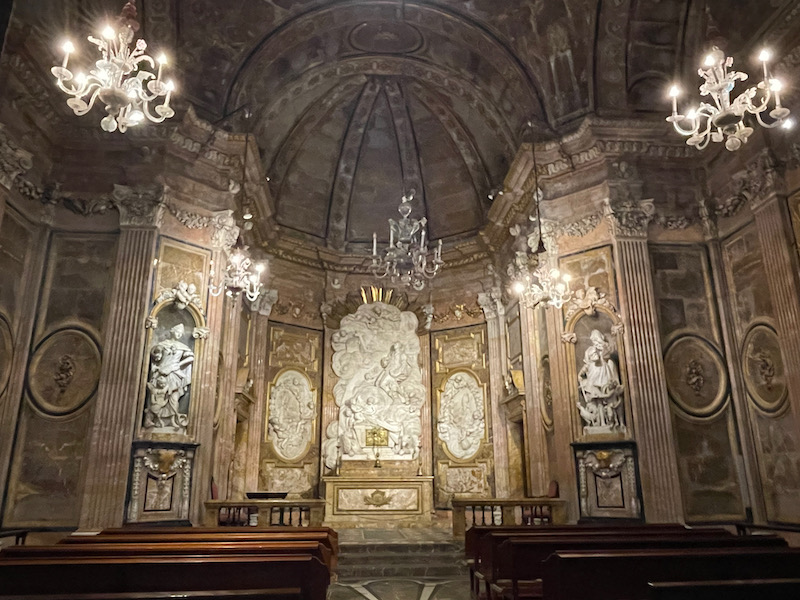
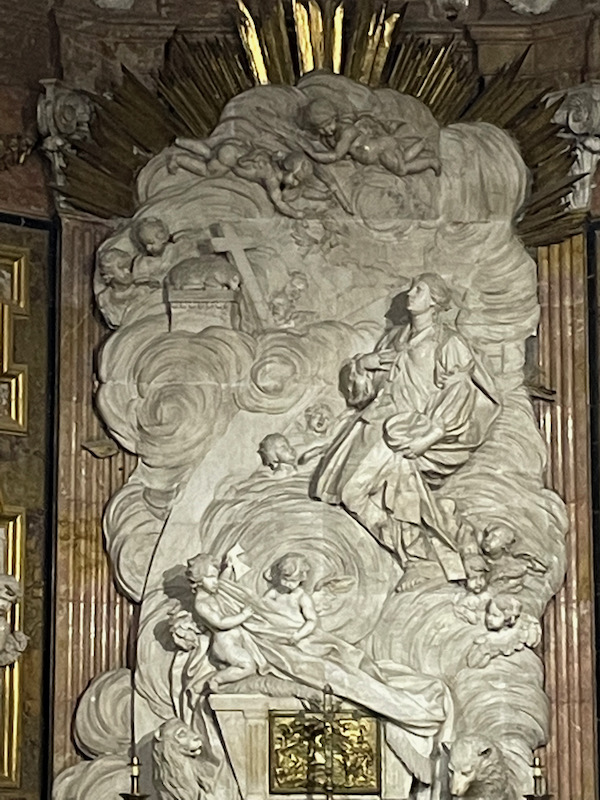
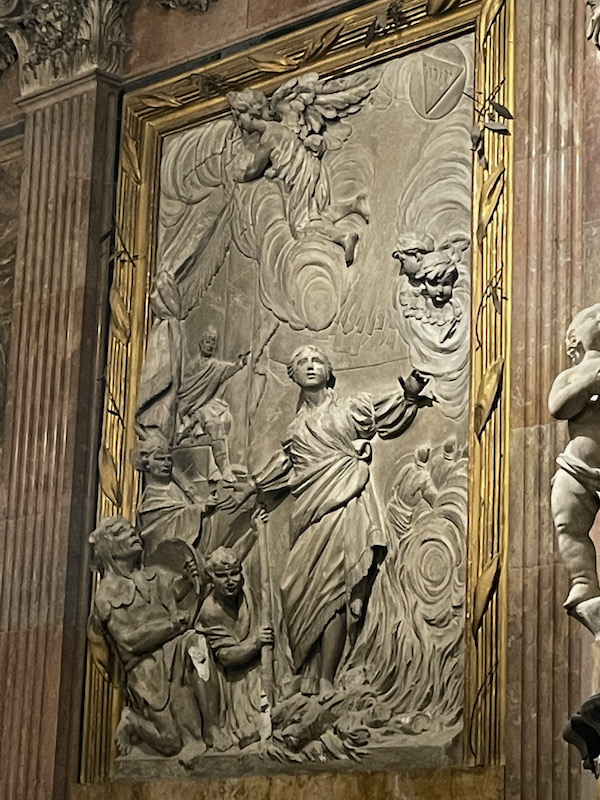
Within the Chapel of Saint Helen and Chapel of Saint Lucia are a set of mural paintings made in the mid-14th century that were discovered in 1933. They are examples of the proto-Gothic style and reveal Italian-Gothic influences in the delicate treatment of the figures. The first picture shows Saint Helena, with the cross on one arm and the crown of thorns on the other. The 2nd is most likely Saint Martha.
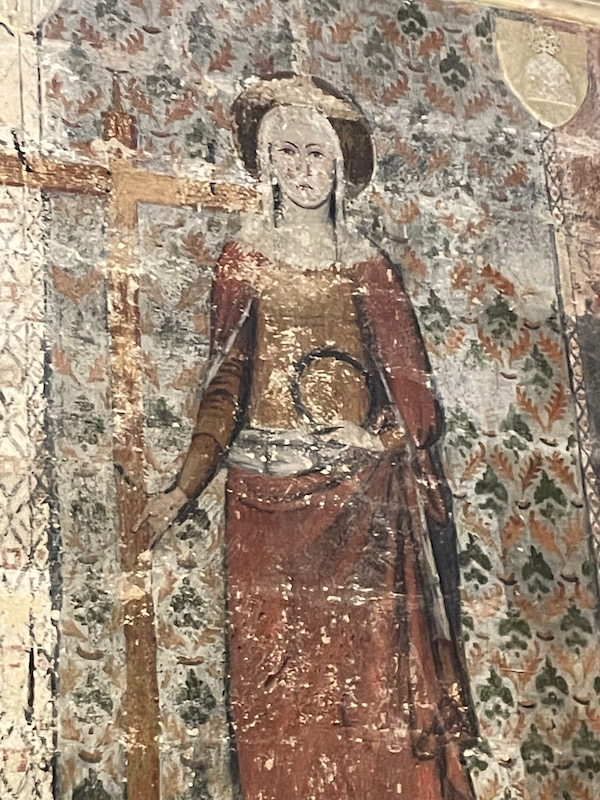
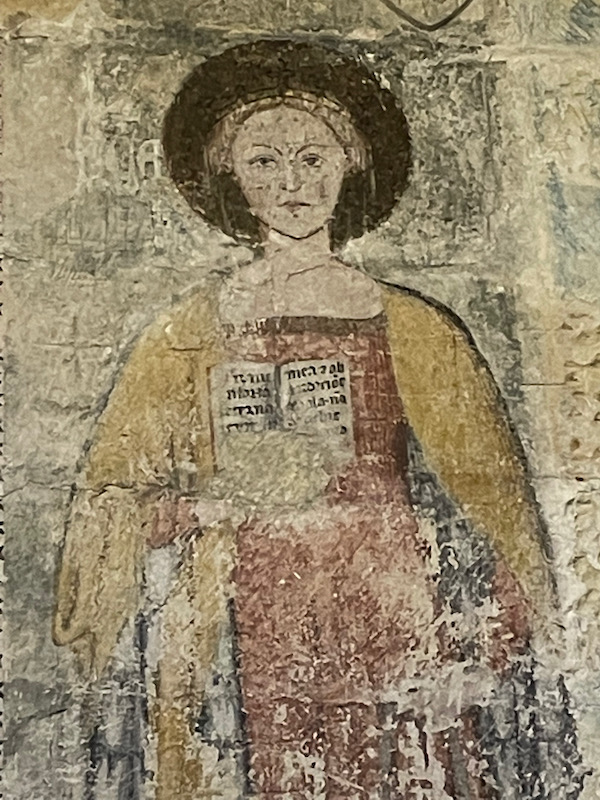
Under the 14th-century rose window on the eastern arm of the transept are three chapels built around the year 1500, called the Chapels of the right arm of the crossing. The decoration on the outside, and the ribbed ceilings, are flamboyant Gothic in design. On the right side is a neo-Gothic altarpiece from the 19th century, then a late-Gothic image of Christ on the cross from the end of the 15th or early 16th century, and then the chapel of the Virgin of the Rosary on the left with statues carved in 1950.
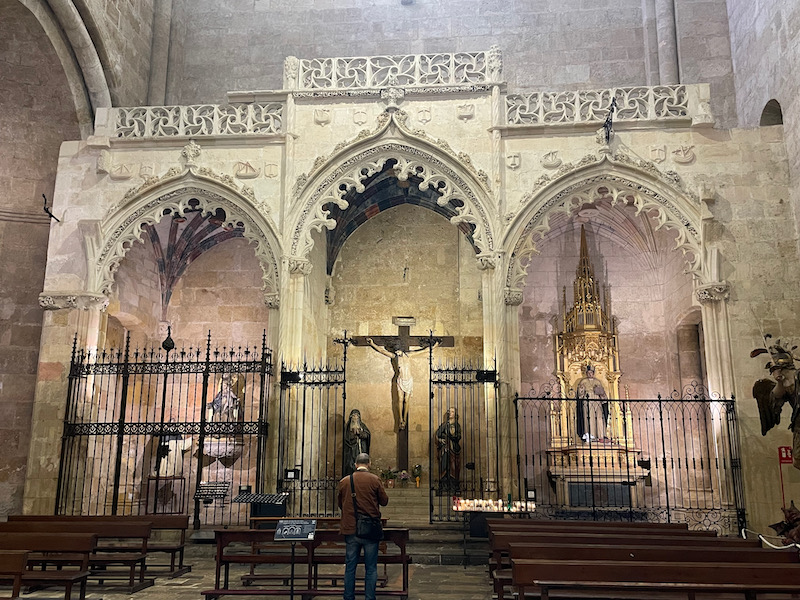
The Choir Stalls were carved between 1478 and 1488 from Flanders oak. I attempted to get a more detailed picture of the carving of the top of it in the 2nd picture.
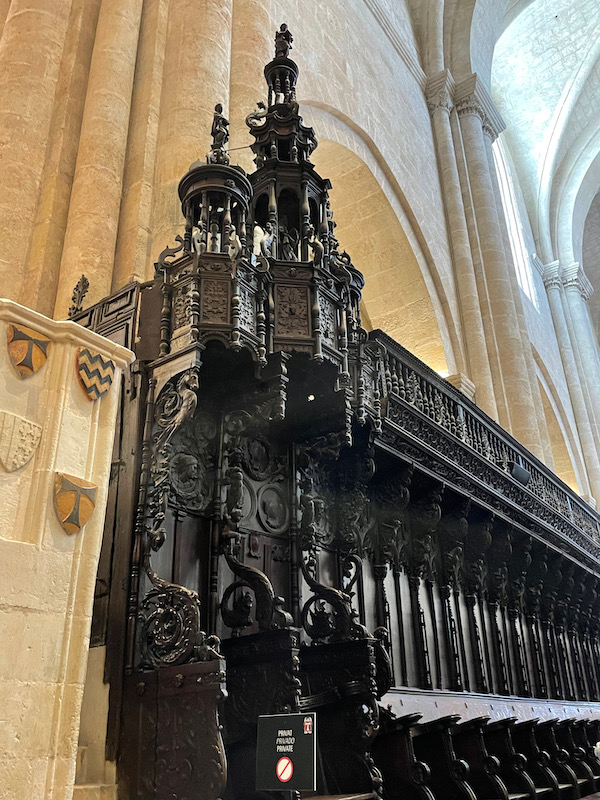
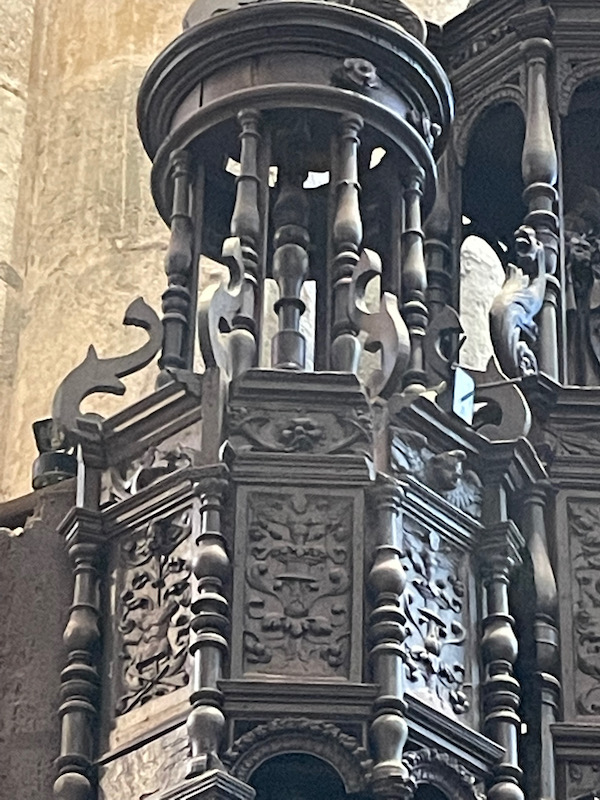
The Chapel of Saint Mary or of the Tailors. This chapel was built in the 2nd quarter of the 14th century and gets the name "Chapel of the Tailors" from the guardianship by the Guild of Tailors. It has a hexagonal plan with a ribbed vault. The top is almost as impressive as the altarpiece. Up in the vaults, there are arches with statues of Saints and stained-glass windows that date from 1359. The altarpiece is made of polychrome stone with scenes from the life of the Virgin. It was sculpted in 1368. The simulated stained glass windows on the wall depict Saint Judas Thaddeus, Saint James the Less and his mother Mary Jacobé. They date from the second half of the 14th century. The last picture is from the right-side of the chapel. You can see a polychrome sepulchral urn of Archbishop Pere de Clasquerí, dating from around 1388 (right side of the picture) and then a painting showing the Archbishop kneeling before the Virgin and the baby Jesus.
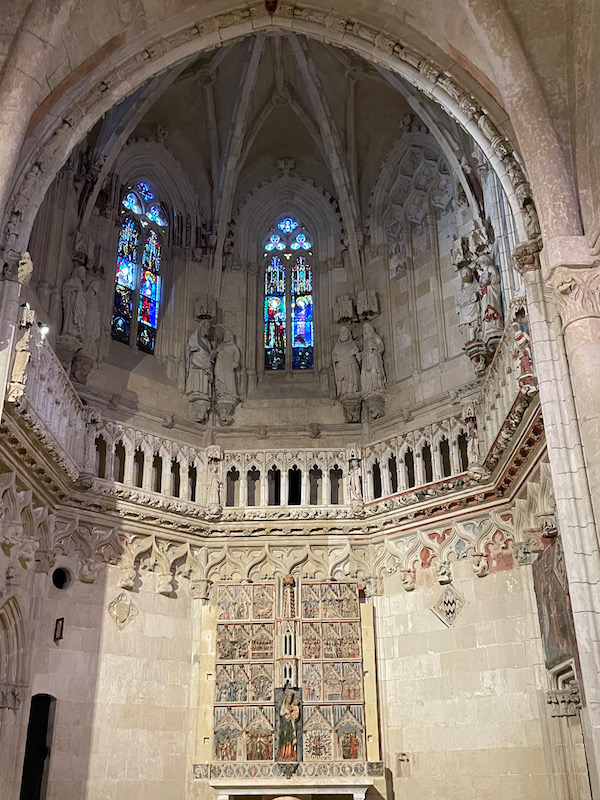
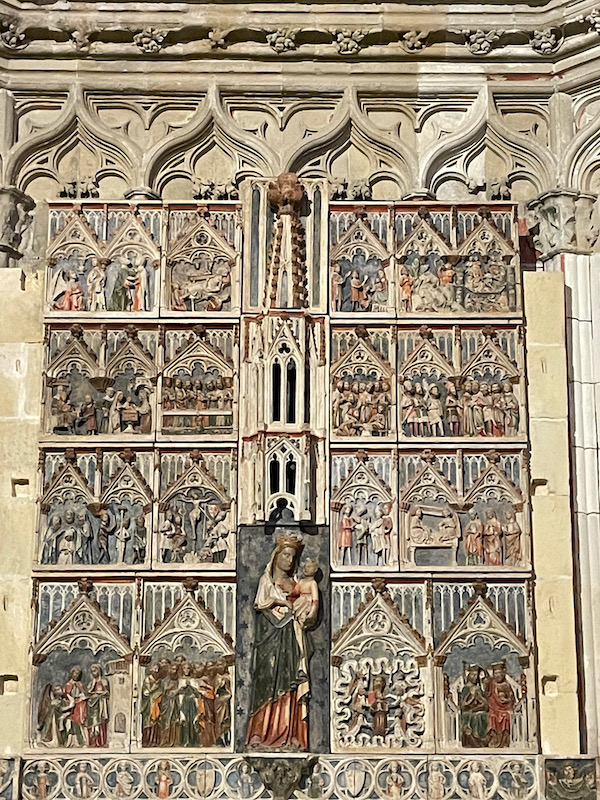
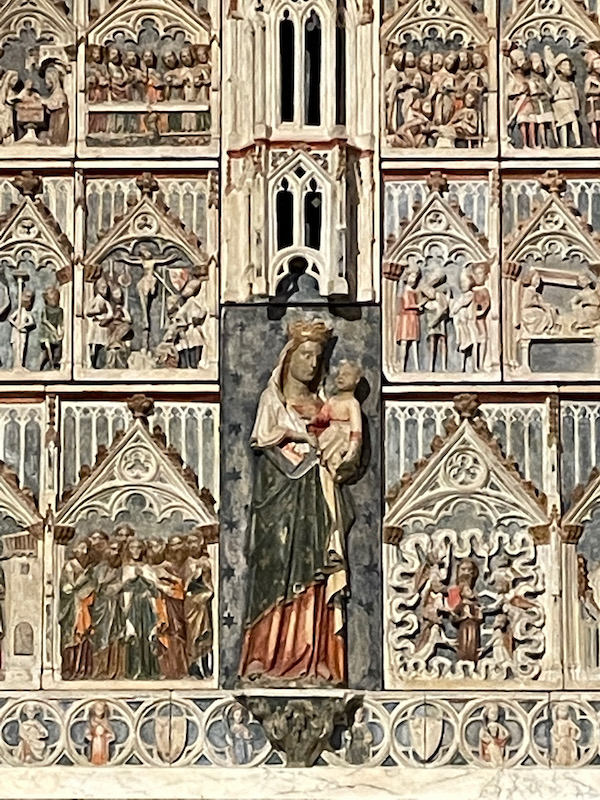
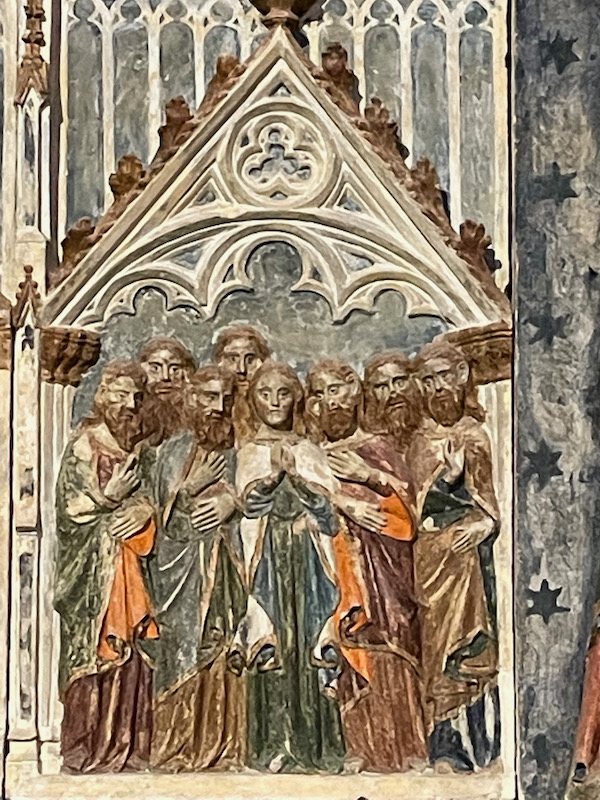
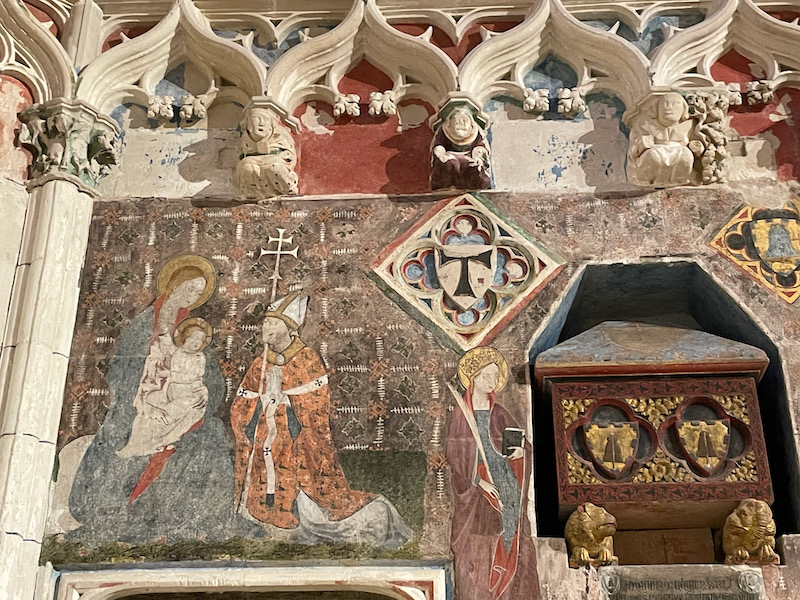
The main altarpiece was sculpted from 1426 to 1434 out of alabaster, and it is one of the best examples of Catalan Gothic sculpture. In the center of the altarpiece is the image of the Virgin with the Child flanked by the carvings of Saint Thecla and Saint Paul. Around that are 12 reliefs that show scenes from the childhood of Jesus, his Passion and Resurrection, Ascension, Pentecost, and Coronation of the Virgin.
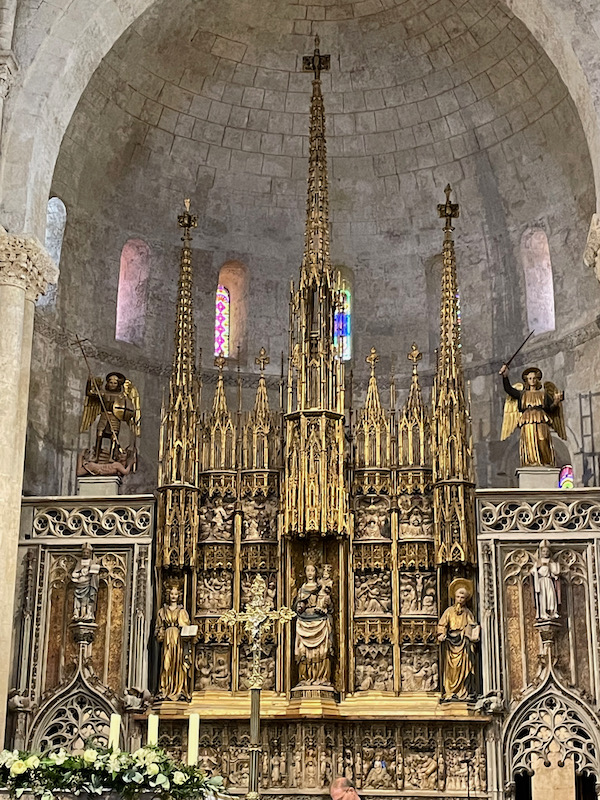
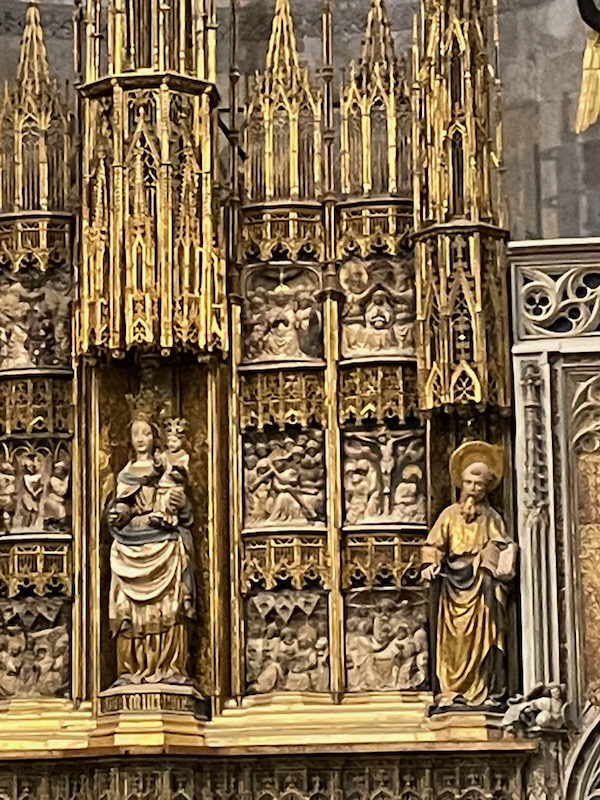
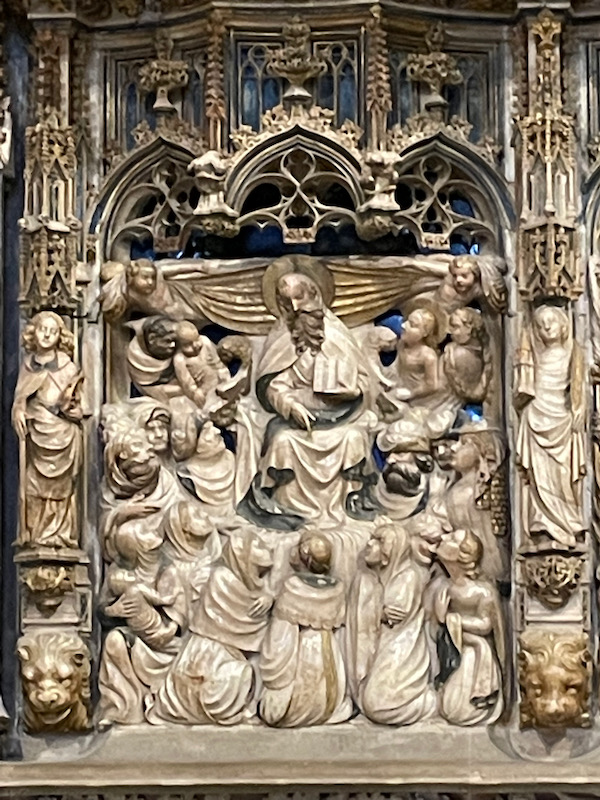
The construction of the cloister began at the end of the 12th century and ended at the beginning of the 13th.
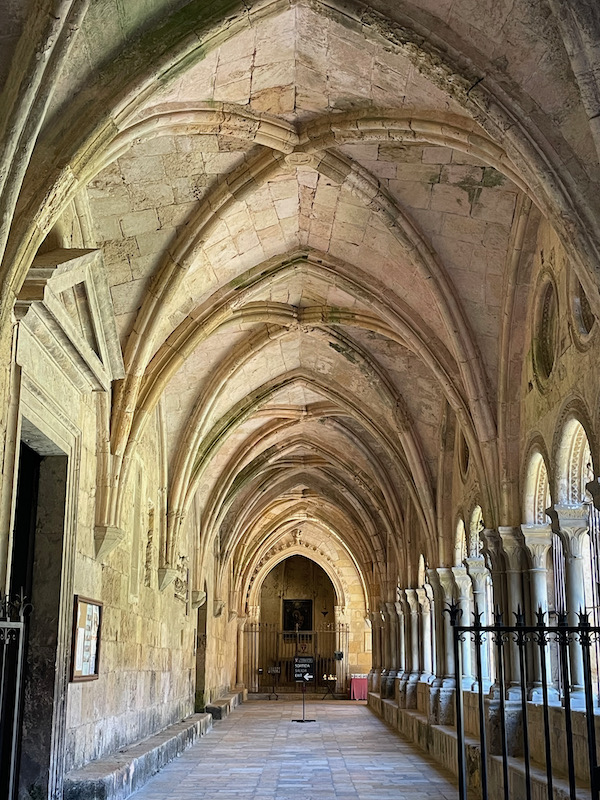
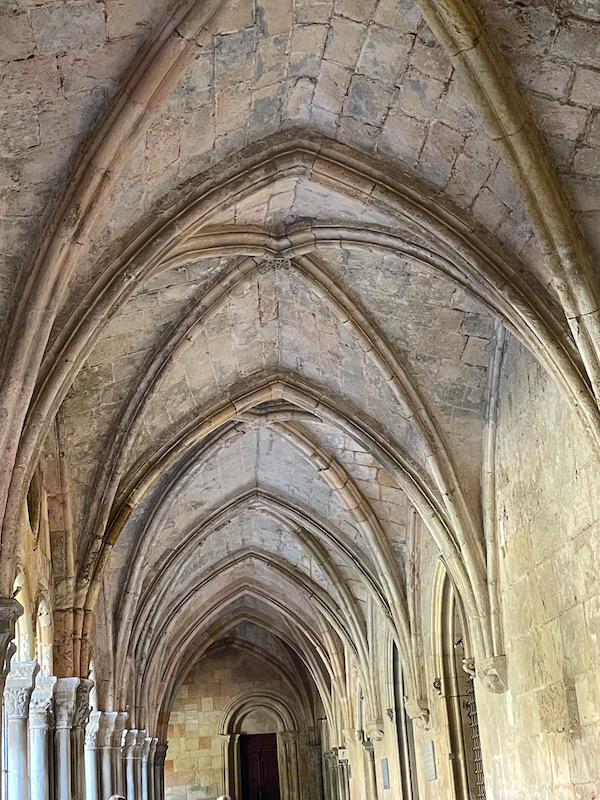
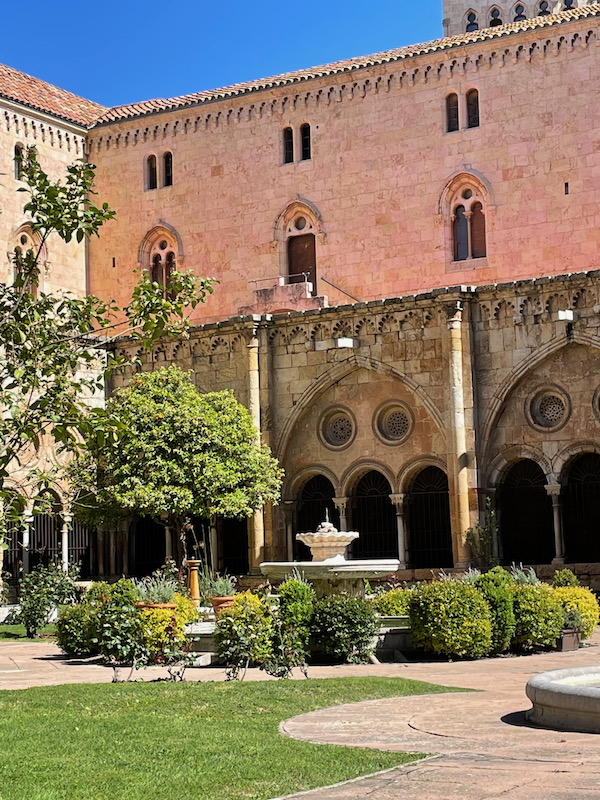
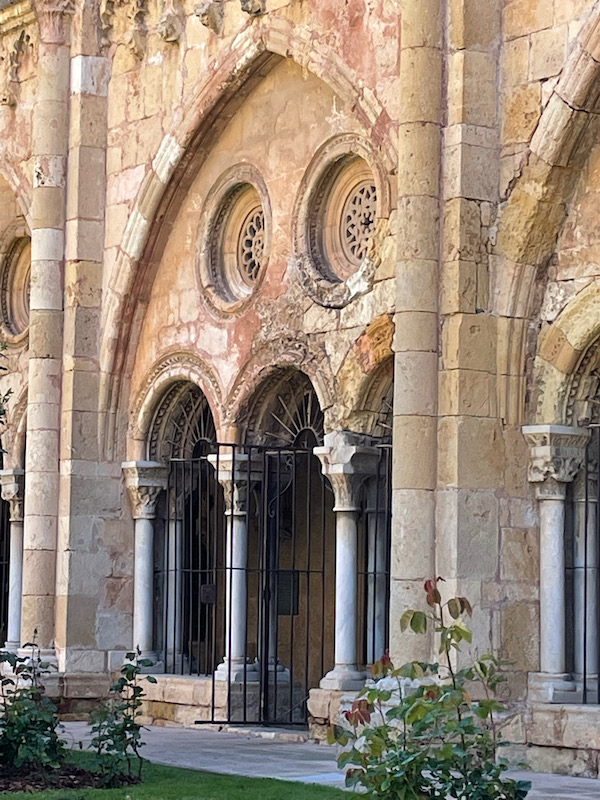
The decoration around the door going from the Cloister into the Cathedral quite impressive. The Romanesque portal was carved in white marble at the end of the 12th century. Here you see God in the middle with the animal representations of 4 evangelists (Matthew the angel, Mark the lion, Luke the ox, and John the eagle). The capitals are also highly carved, this one showing the adoration of the Magi.

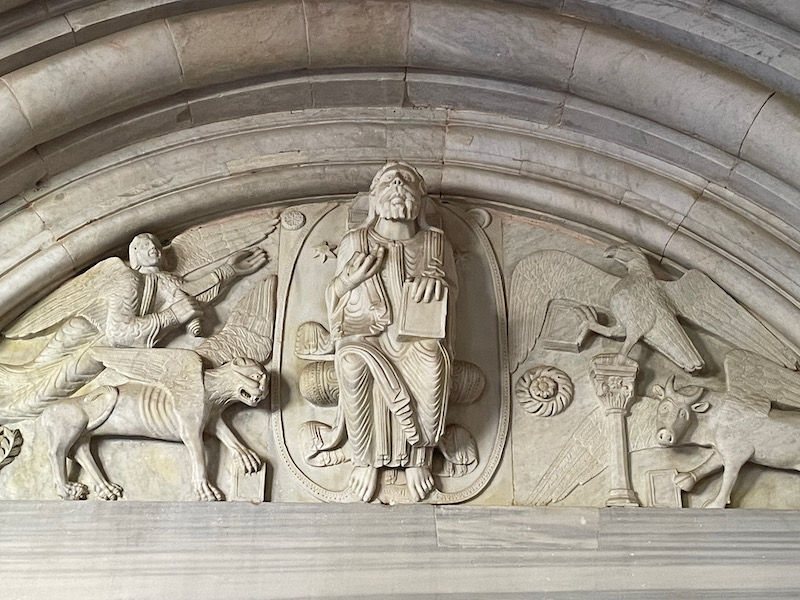
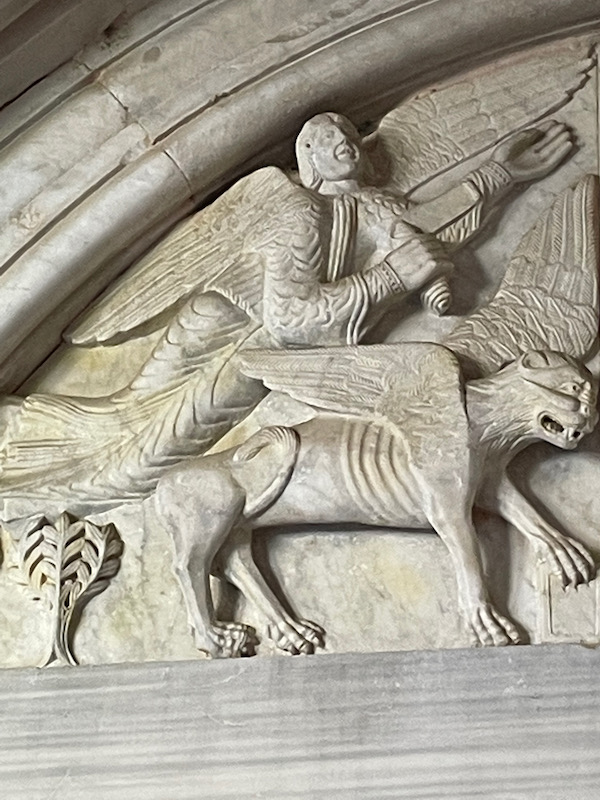
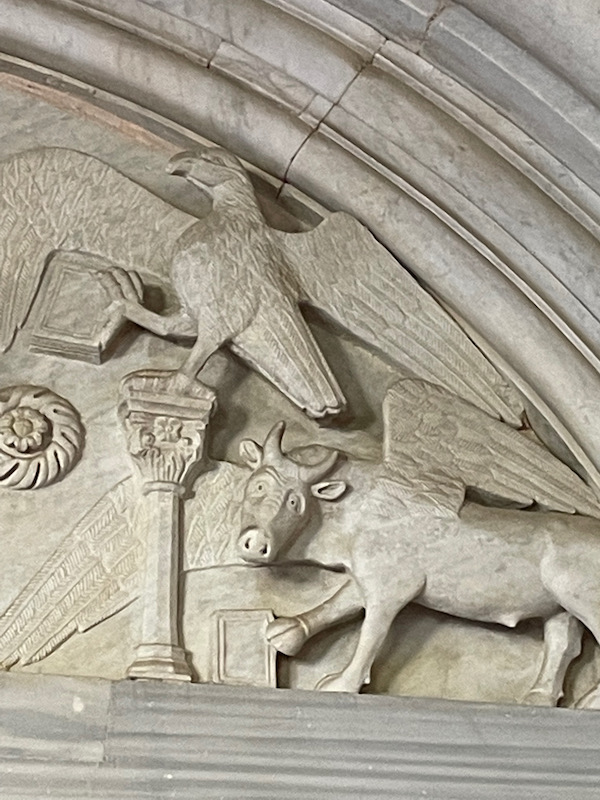
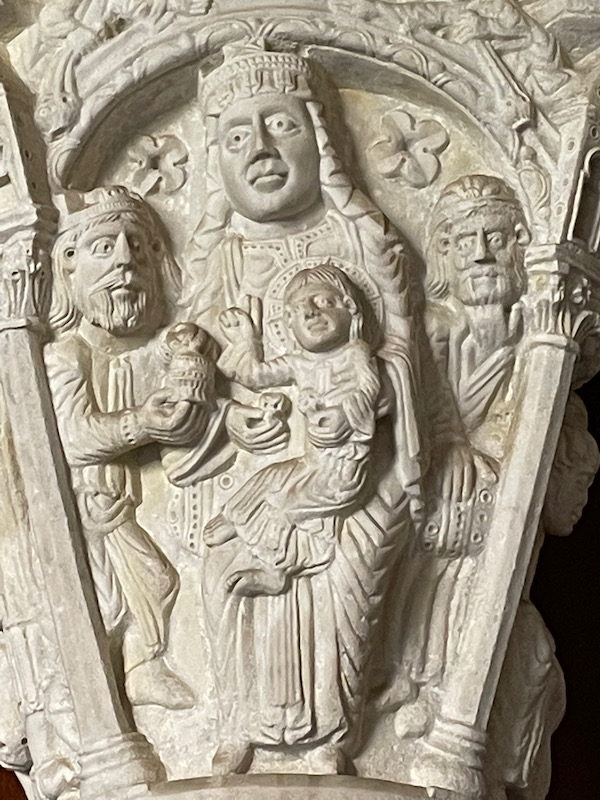
The decoration is quite different in the Chapel of the Immaculate Conception. This chapel, designed in 1674, is definitely Baroque.
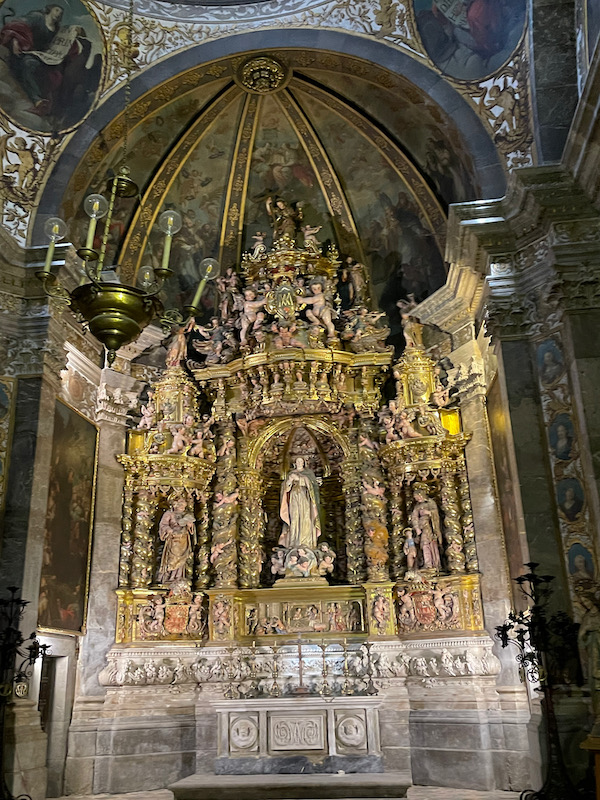
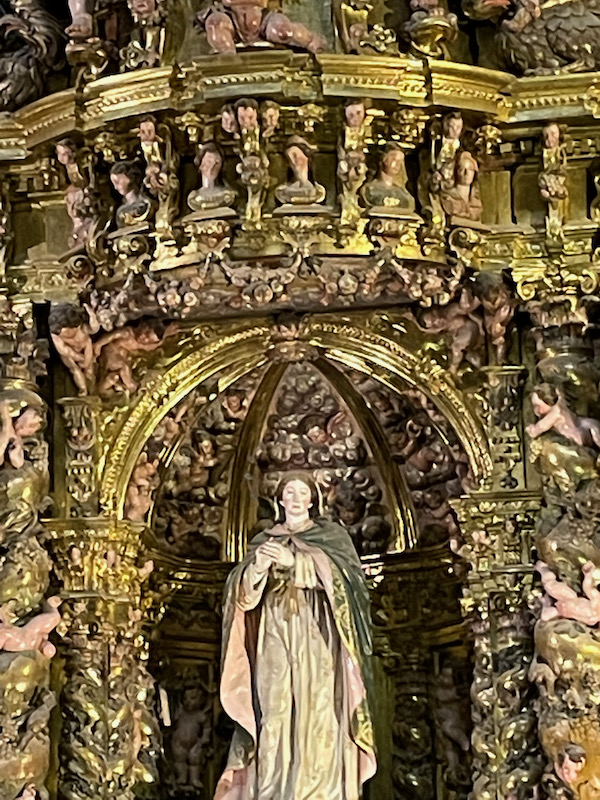
Lastly, the Chapel of the Cardona family. This twin chapel was built between 1520 and 1525 in the flowery or late Gothic style. It is named for the family of Archbishop Pedro de Cardona, which paid for the construction. On the right-and-left walls are mausoleums that house sarcophagi. The altar in the middle has scenes from the life of the Virgin Mary, done in the 15th century.
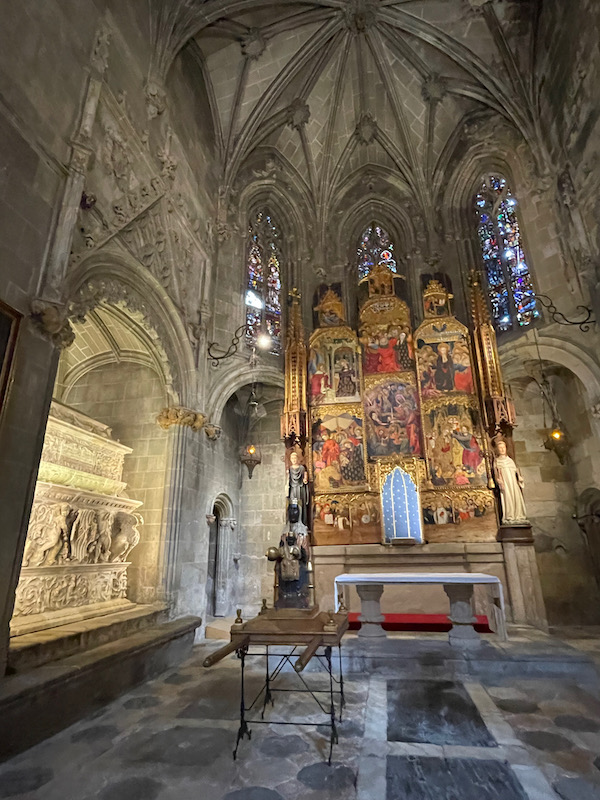
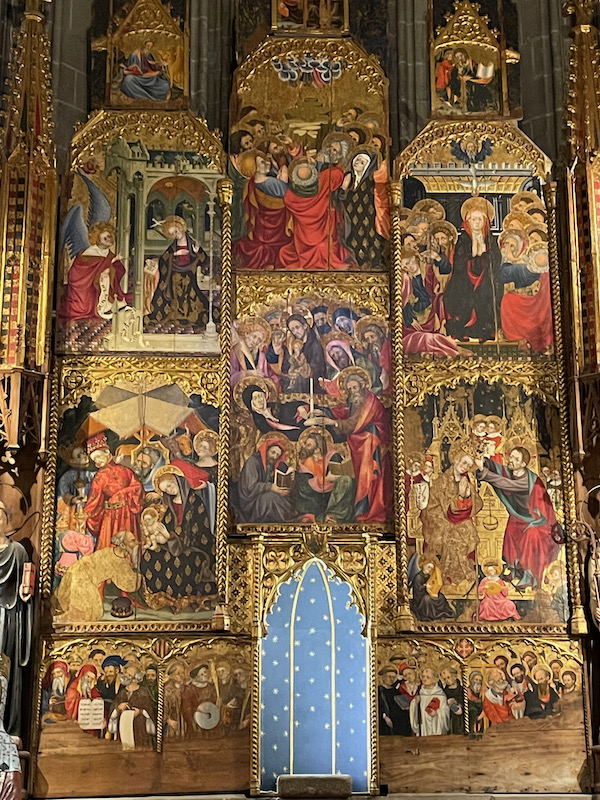
These are the remains of a wall from the Roman provincial forum, which sits in the middle of Plaza del Forum.
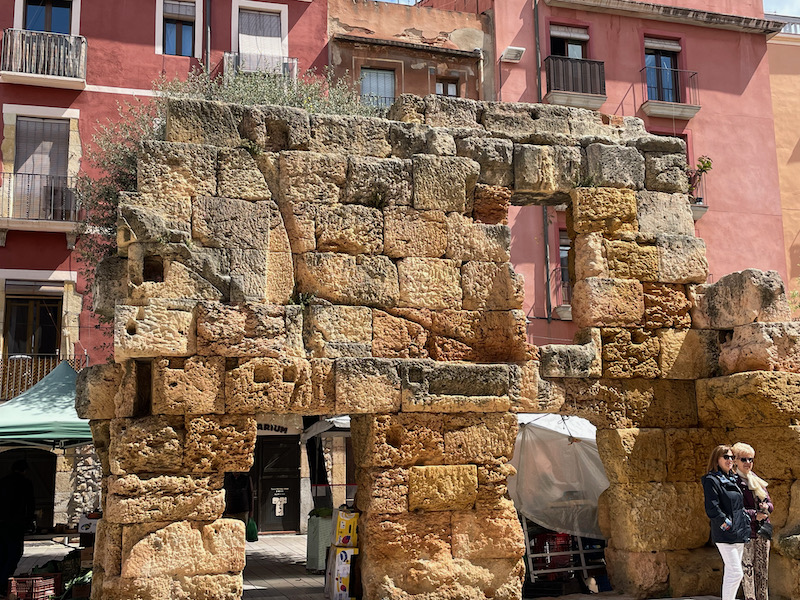
We happened to run into this on our last morning in Tarragona, after playing with Lucy in a large field nearby. It is a PaleoChristian cemetery from the late Roman times. It was discovered in 1925 during foundation works for a factory and there are over 2,000 tombs ranging from the 3rd to 5th centuries. There is an open-air area (that you see below) and a museum (which we didn't go into).
